On the first weekend after moving to Copenhagen, I decided to take a trip out to one of Denmark’s nature pearls located on the beautiful island of Møn in South Denmark. Two years earlier, I had given my parents a voucher for a weekend trip to Møn for mother’s day, which they had decided to use on that glorious weekend in late August. Since I now lived close to the island, they had invited me along as well, and I said yes without hesitation.
I have always wanted to see Møns Klint, the famous 120 m. high limestone cliffs on the eastern coast of Møn, and what better way to explore it than with my parents?
But as I found out while we were driving through the island, Møn is a lot more than just the famous cliffs. The island may be tiny, but there are so many sights to see that we couldn’t even fit them all in. I somehow had to pick and choose.
We stayed in an old farmhouse in the middle of Møn, which was a good base for our explorations of the island. All of Saturday and some of Sunday were spent driving around the island, exploring the cliffs, an old castle, a tiny island connected by bridge, Stege – the largest town on the island and several interesting archaeological sites.
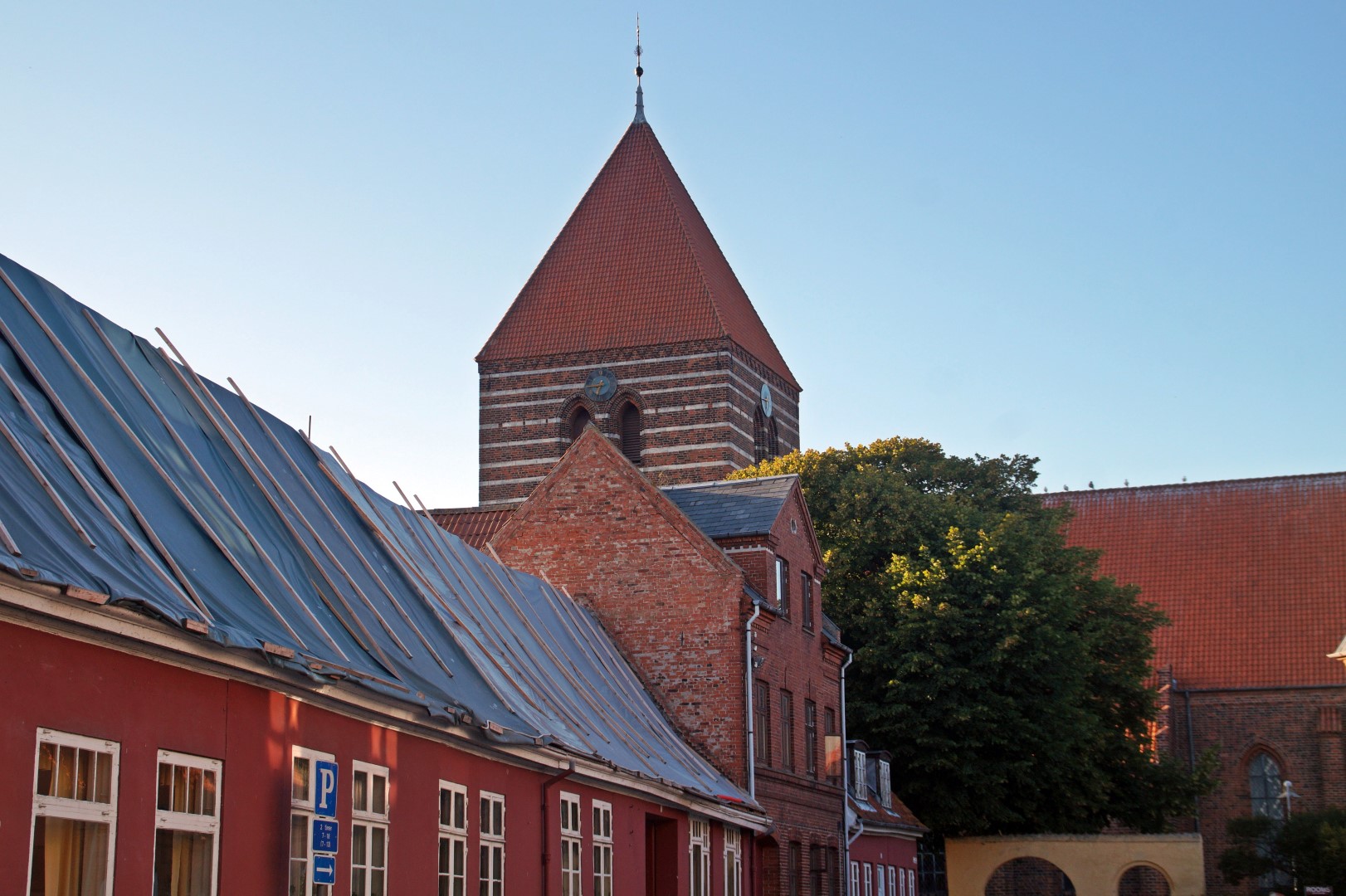
Møns Klint, the highest chalk cliffs of Denmark
The first thing that we drove to was, of course, the famous Møns Klint. I just couldn’t wait any longer! Denmark is generally not world famous for its nature, since there isn’t as much spectacularity as in other countries, but we do have a few nature pearls that shouldn’t be overlooked. Møns Klint is one of those.
Møns Klint is a 6 km. stretch of chalk cliffs that fall a sheer 120 m. into the ocean. The chalk cliffs emerged at the end of the last ice age about 11,000 years ago, when the ice melted. The cliffs and the surrounding woodlands, ponds and steep hills are protected as a nature reserve. It’s possible to see the cliffs from above, but to get the whole experience, one must climb down the 497 steps to the shore, just to stand there and feel so extremely small compared to the sky-high cliffs. The ocean around Møns Klint is azure and the beautiful colour of the water is a spectacular contrast to the crystal white cliffs.
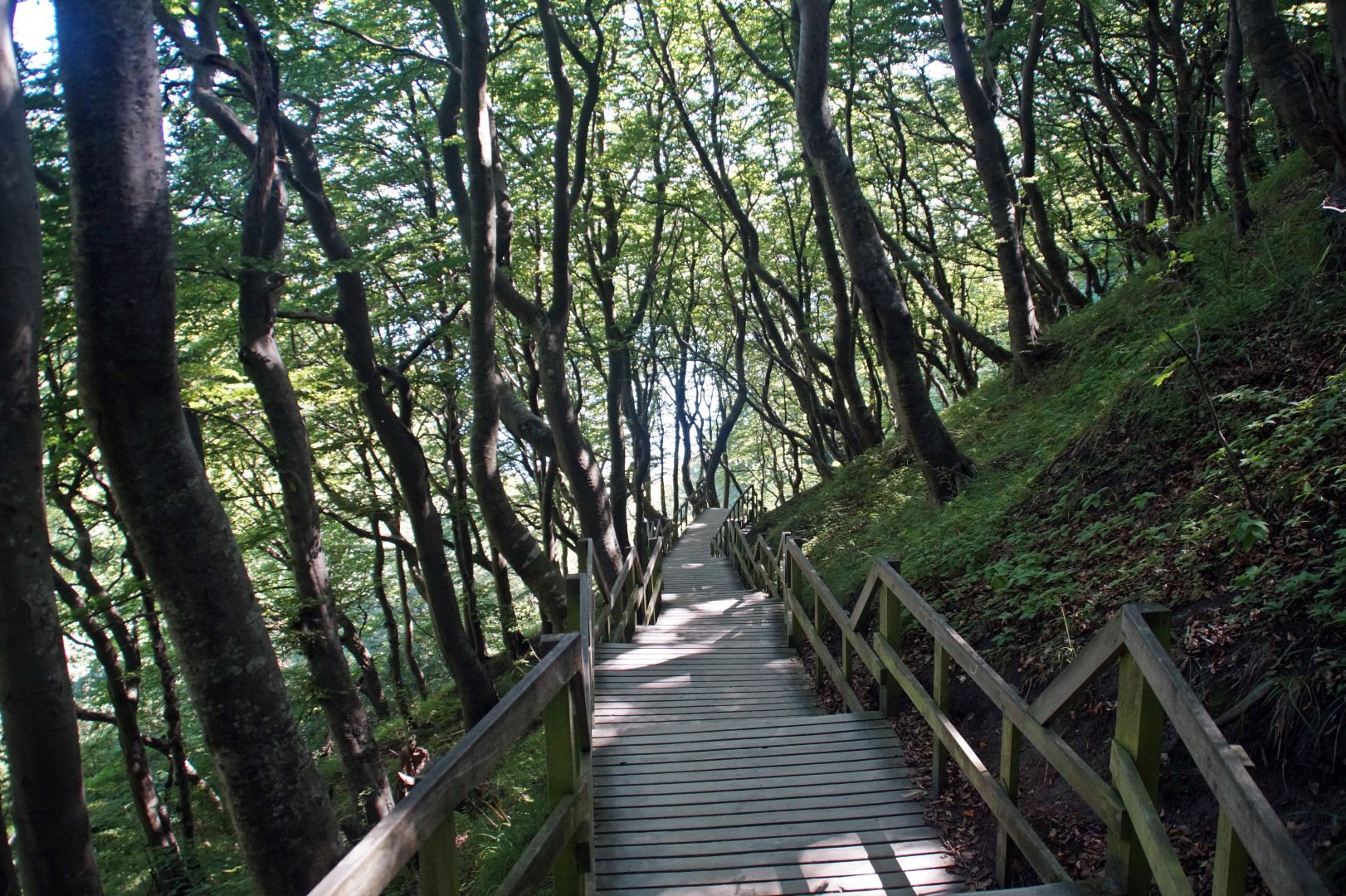
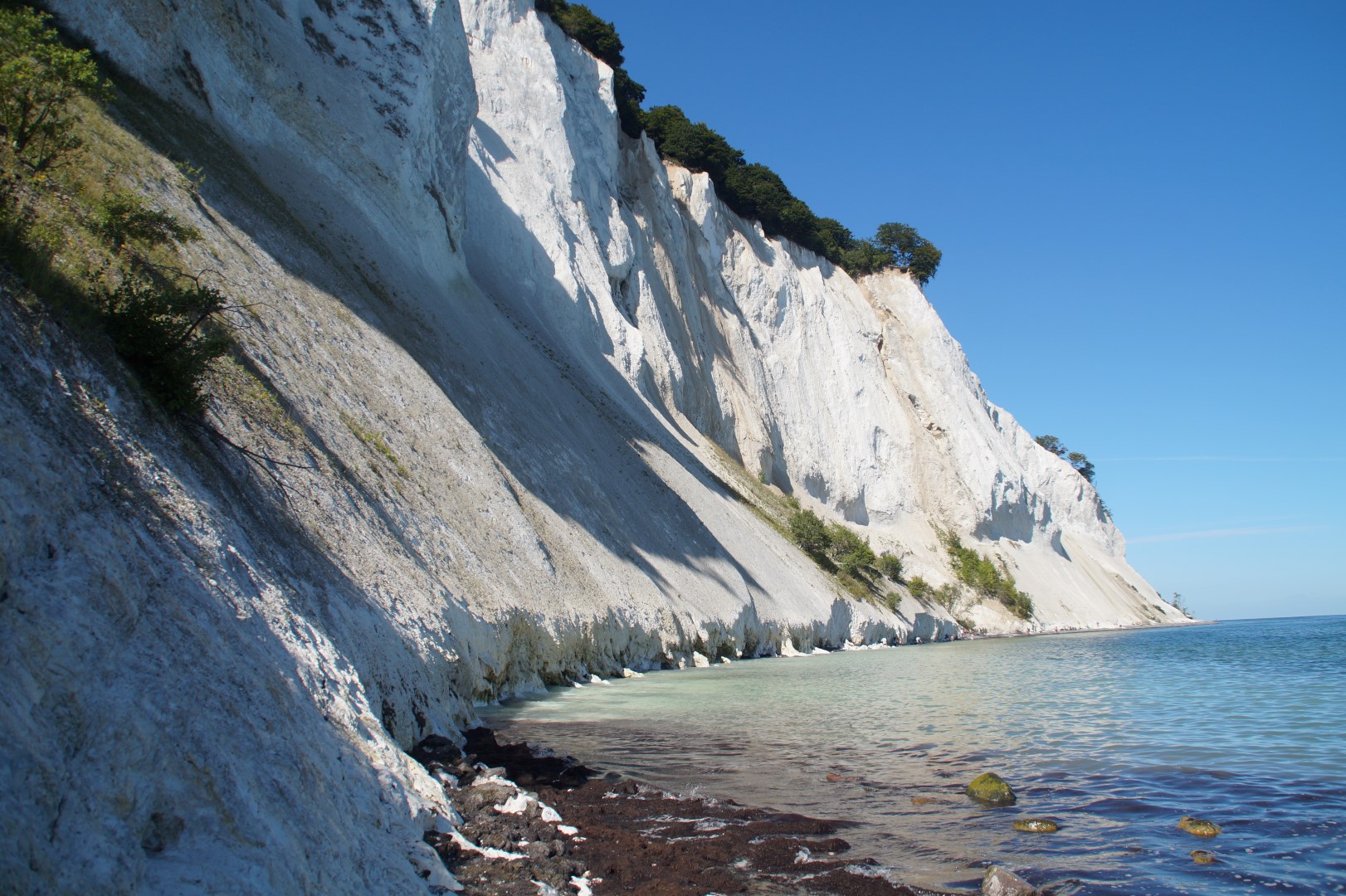
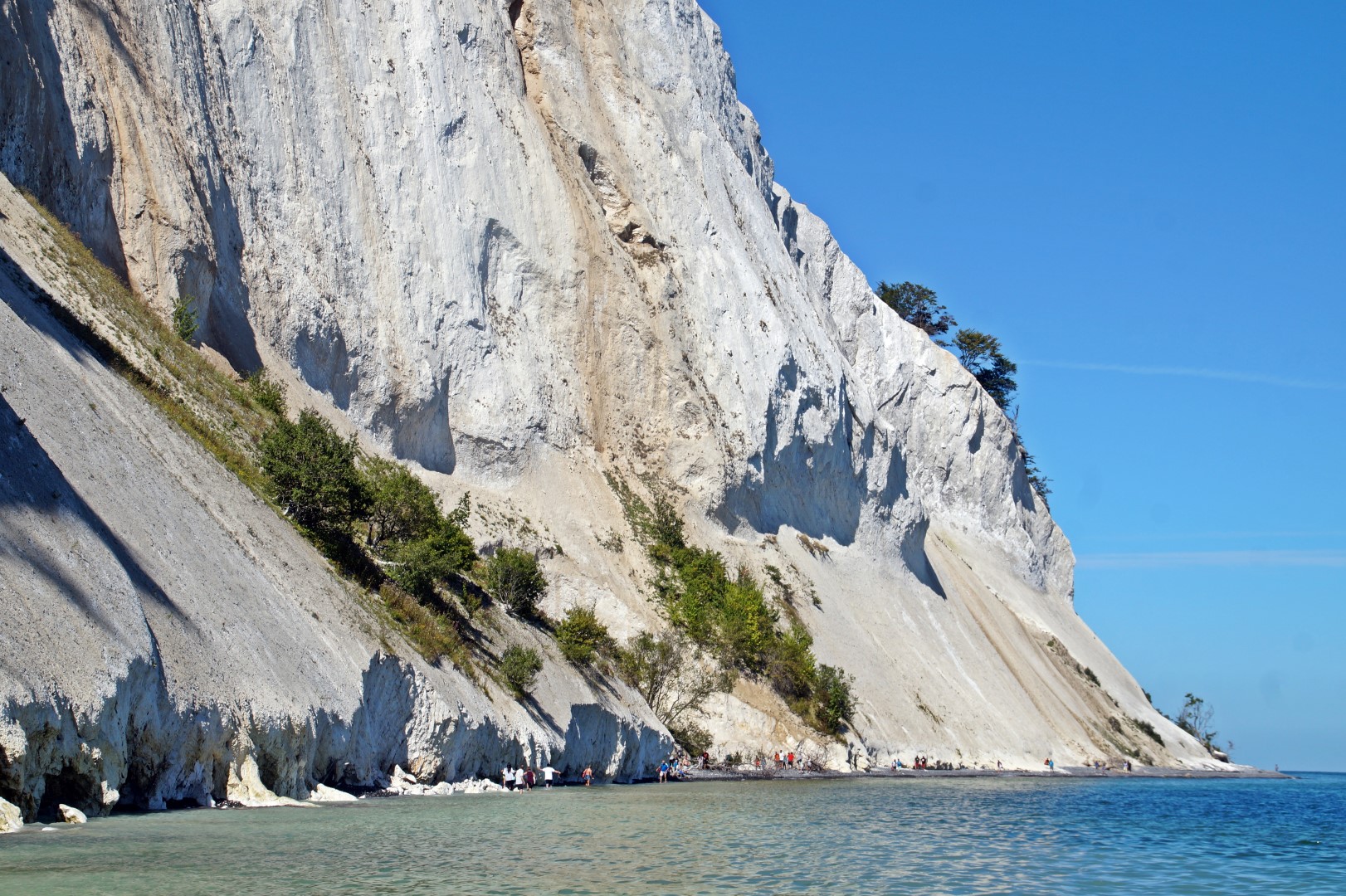
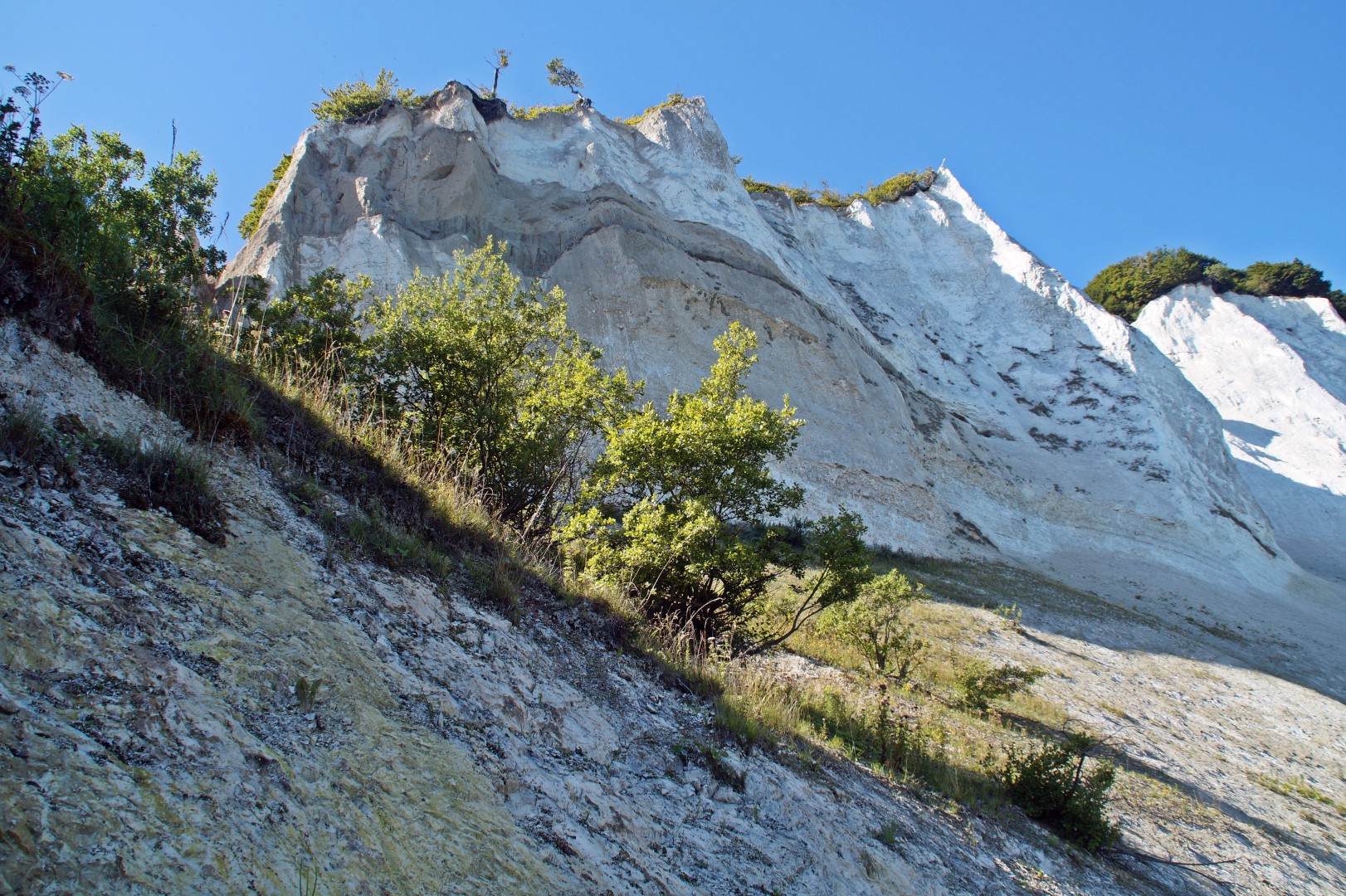
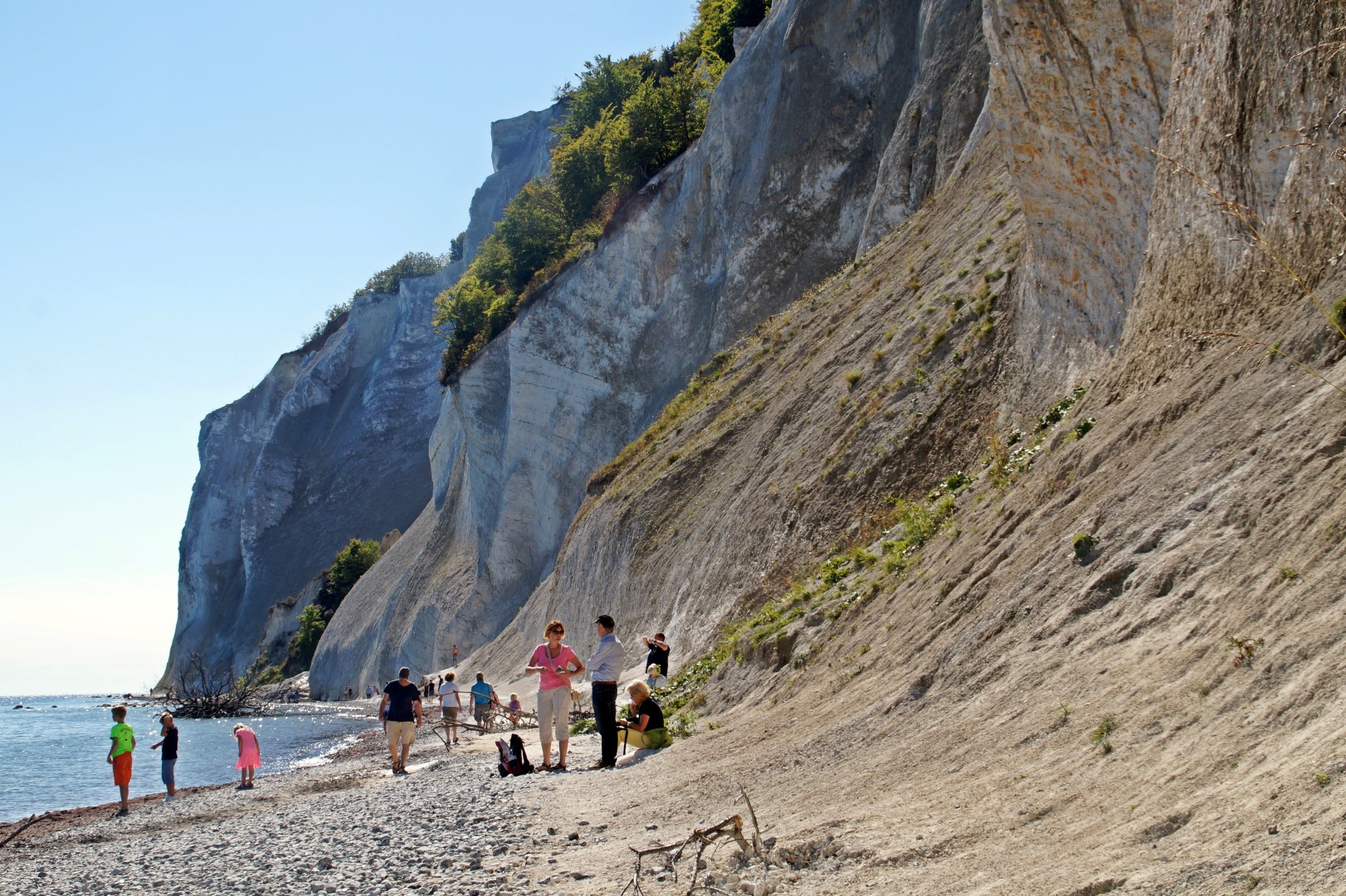

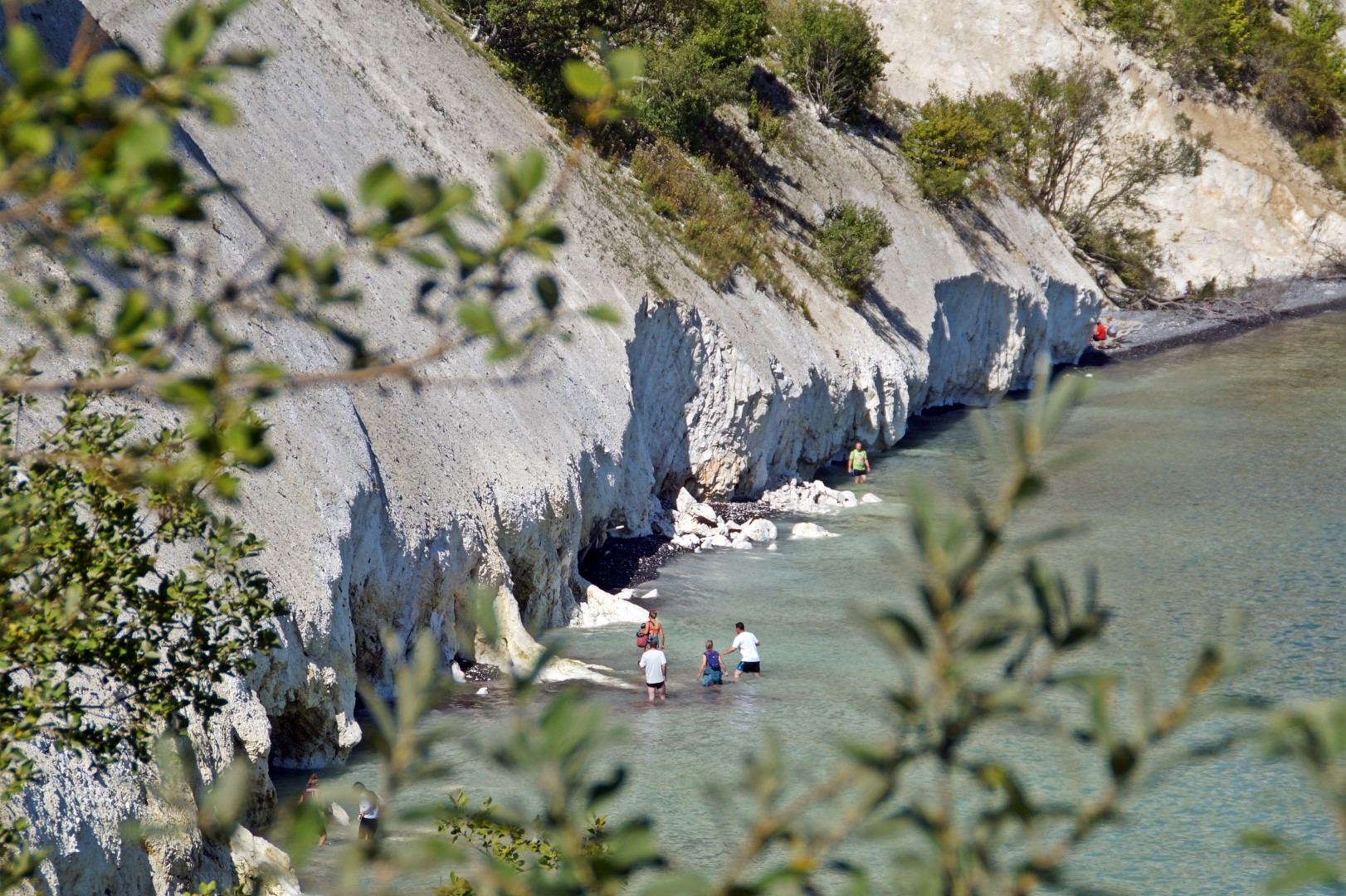
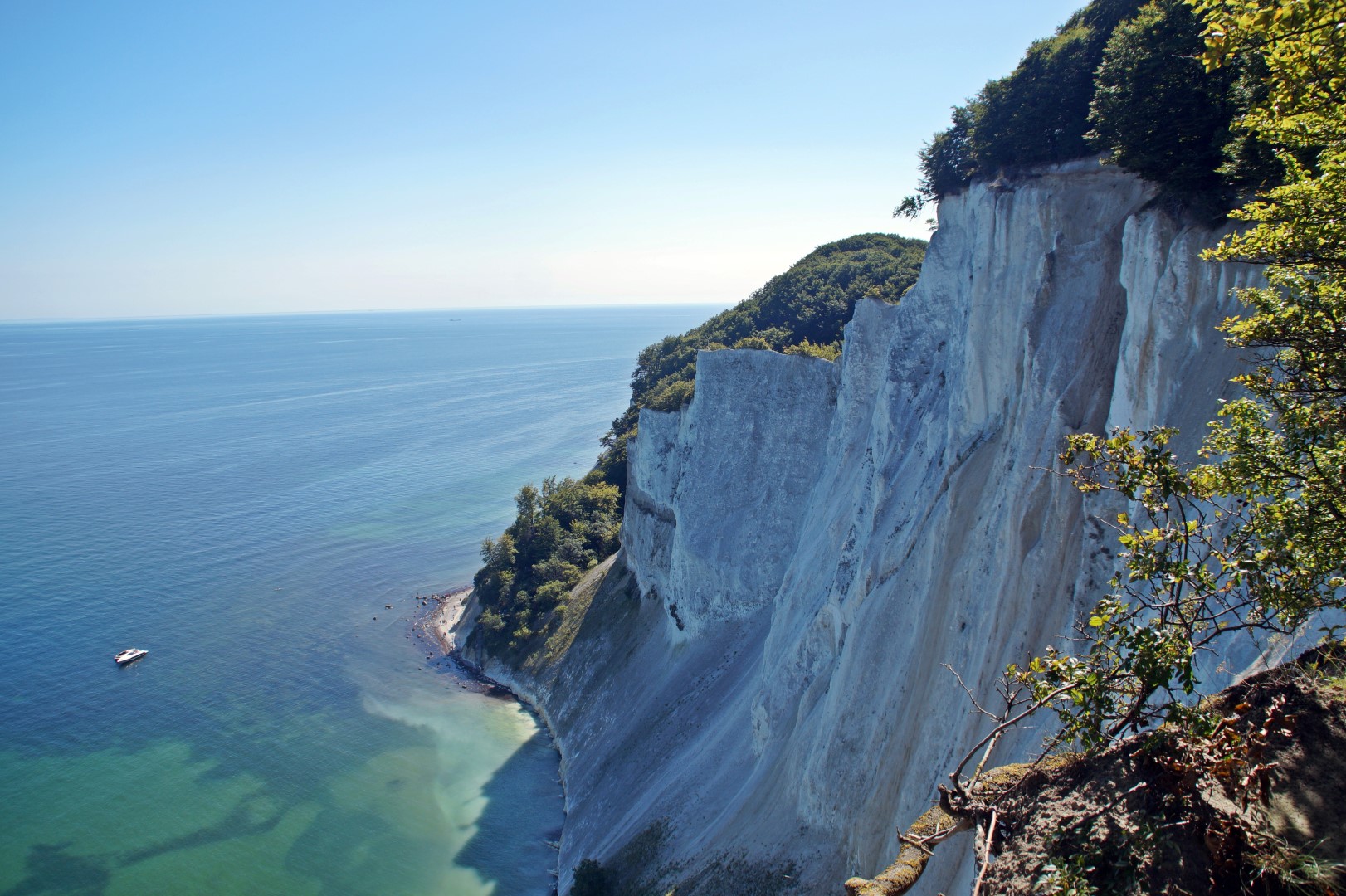
Liselund Gammel Slot, the old castle of Møn
Close to Møns Klint lies the old castle of Møn, Liselund Gammel Slot, in the 18th-century aesthetically landscaped Liselund Park created in the 1790s by French nobleman Antoine de Bosc de la Calmette for his wife Elisabeth, who the place is named after.
We spent a good hour wandering around the idyllic park and checking out the tiny castle, which looked more like a beautiful summer cottage to me.
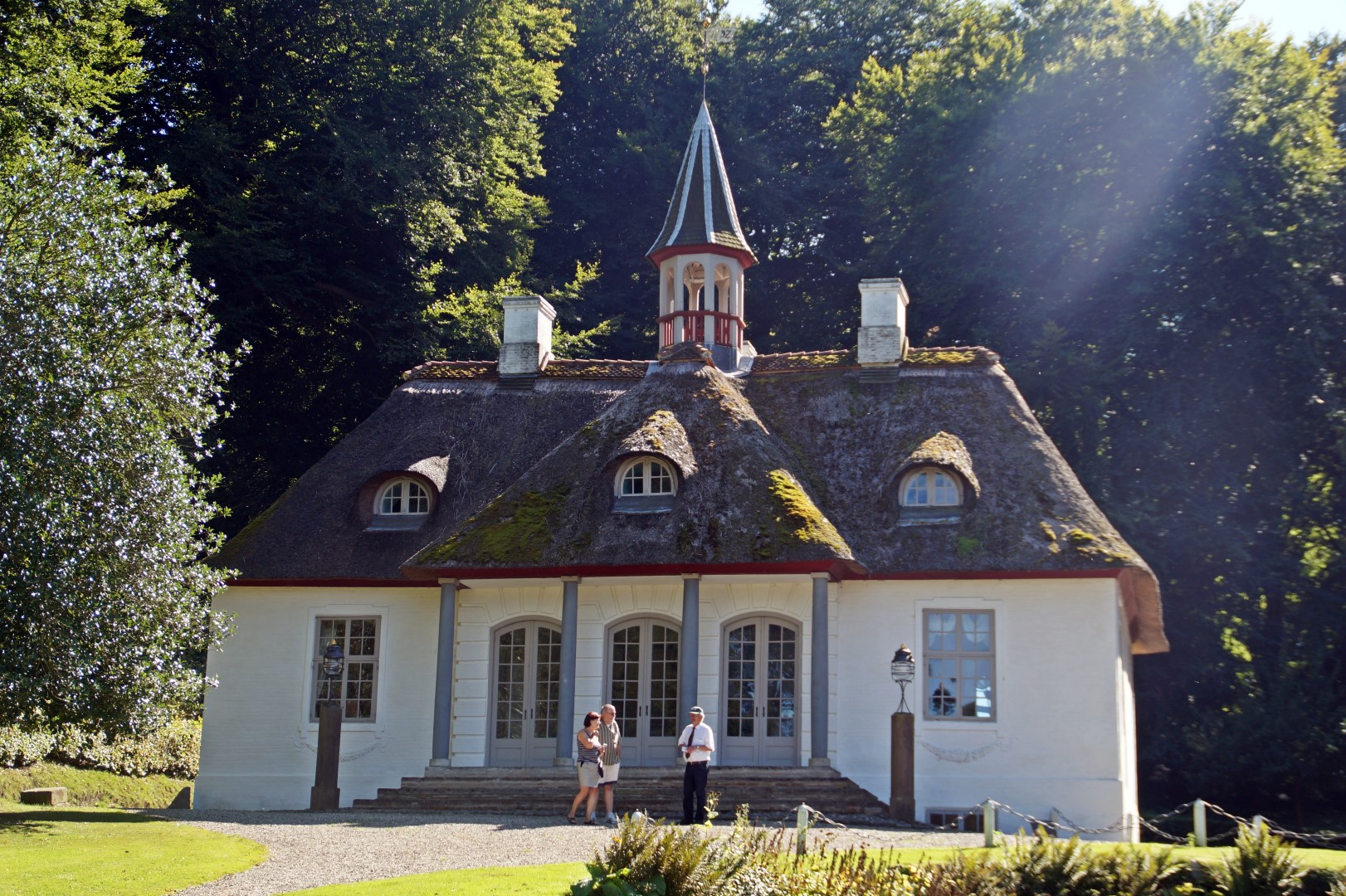
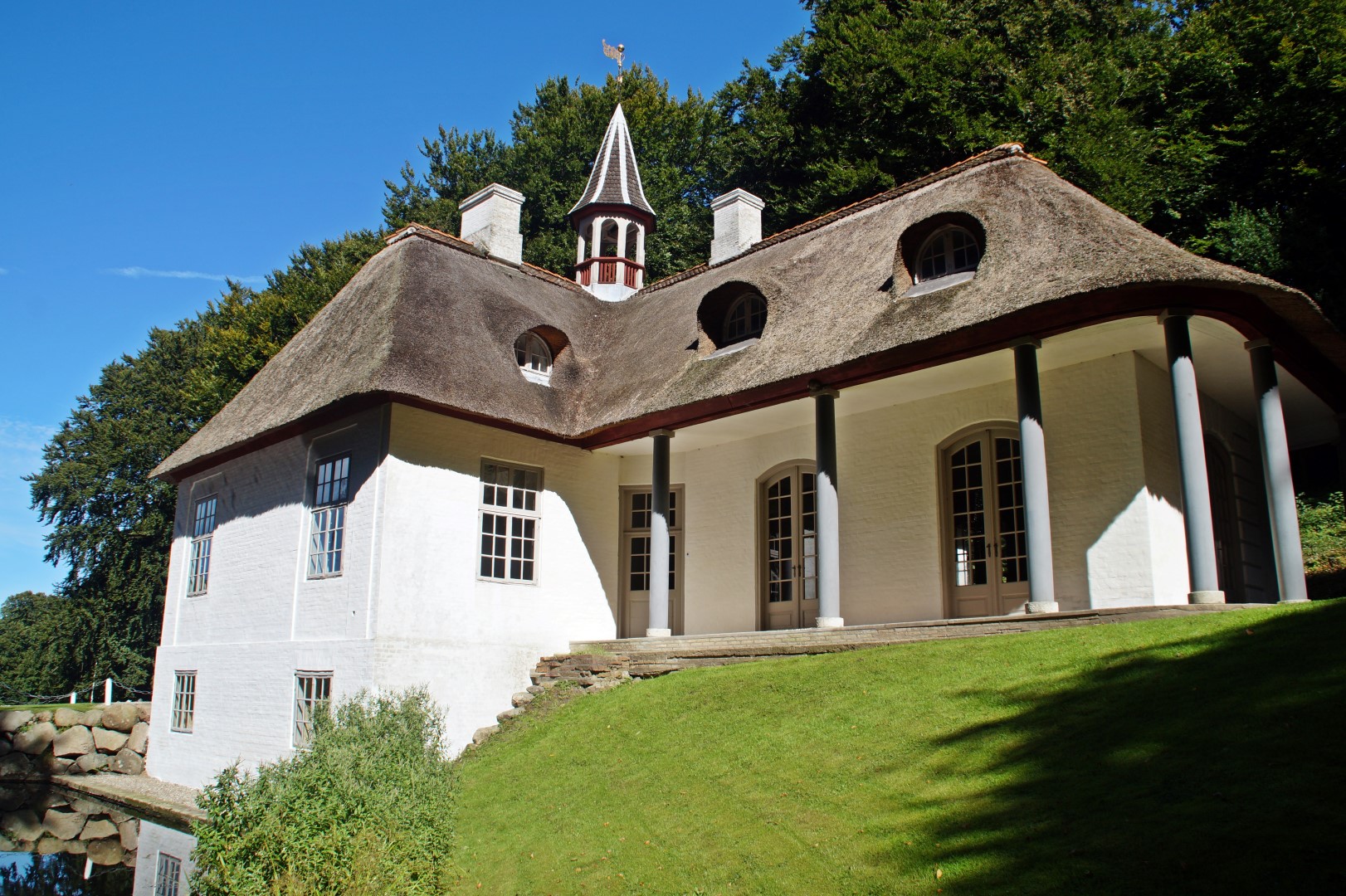
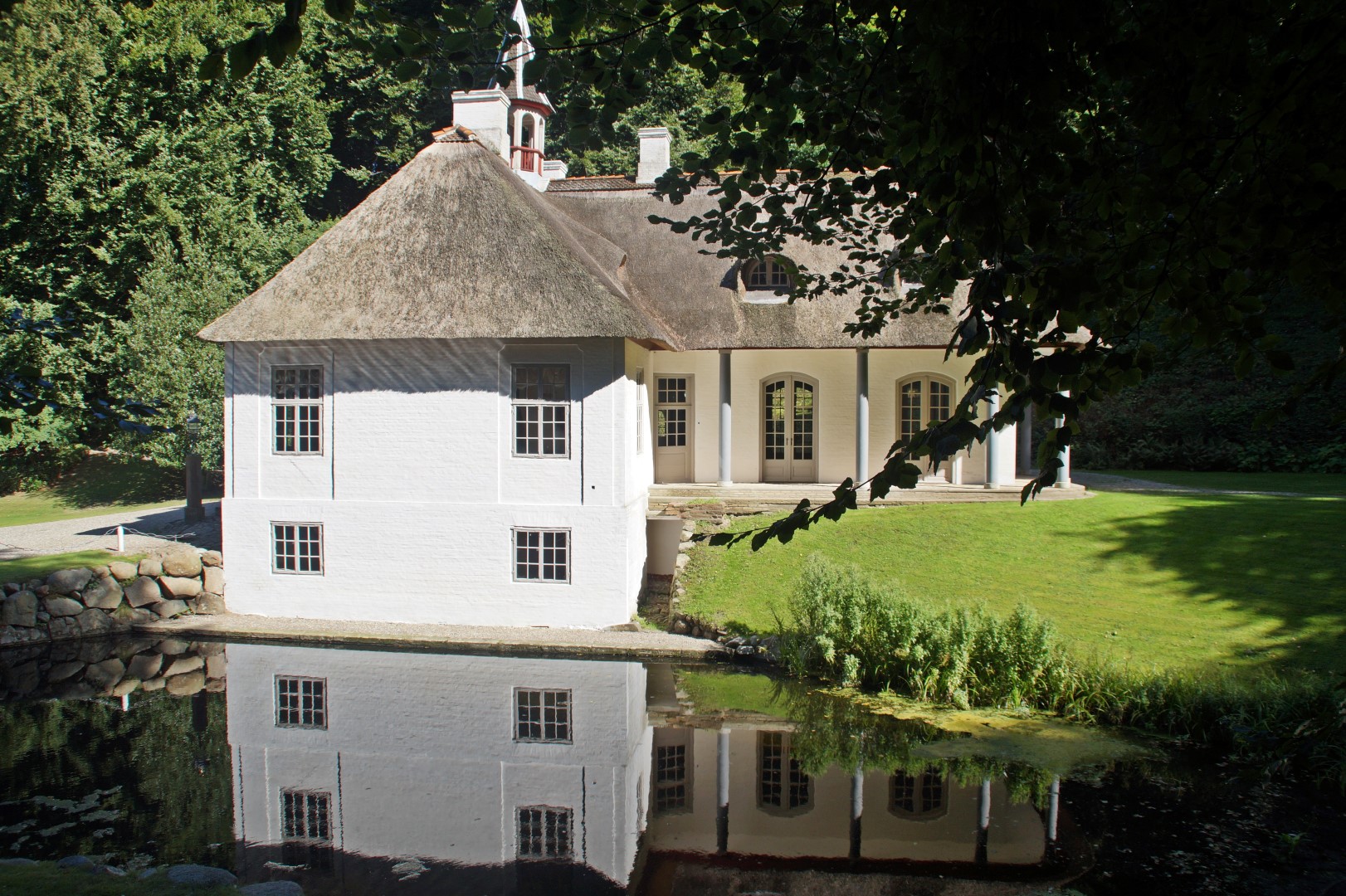
Nyord, the island where time stands still
Next on the itinerary was the tiny island to the north of Møn, Nyord, which is connected by a narrow bridge from 1968. We went for a walk through the car-free village of Nyord, which is a traditional old Danish village with thatched cottages and timber framed farmhouses, and ended by the small harbour. Lastly, we visited the mustard mill, which the island is famous for, where my dad, who is a huge fan of mustard, bought several samples in tiny jars.
The atmosphere on the island is very relaxed, and it seemed like the perfect place to come for a peaceful and stress-free holiday.
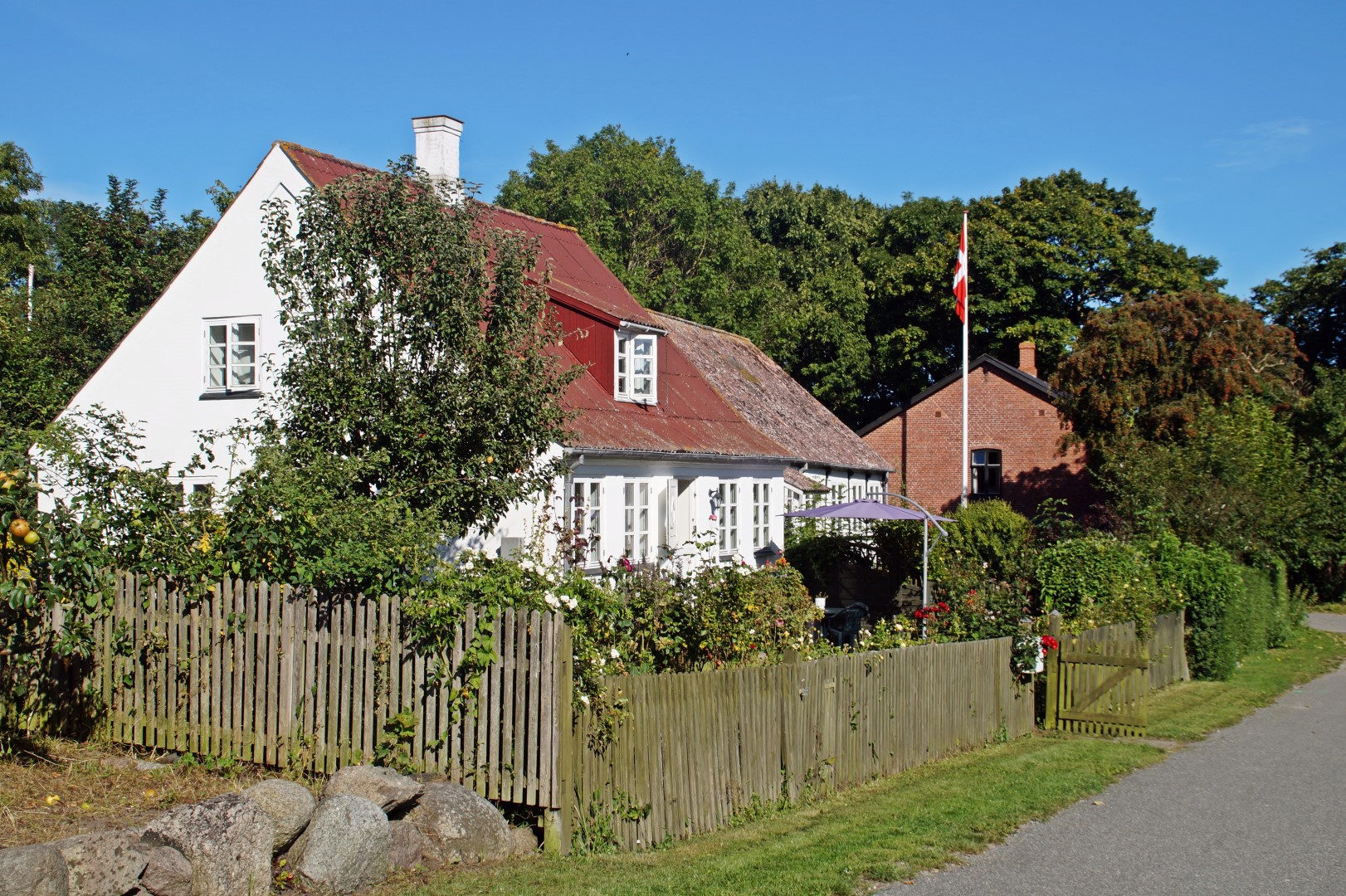
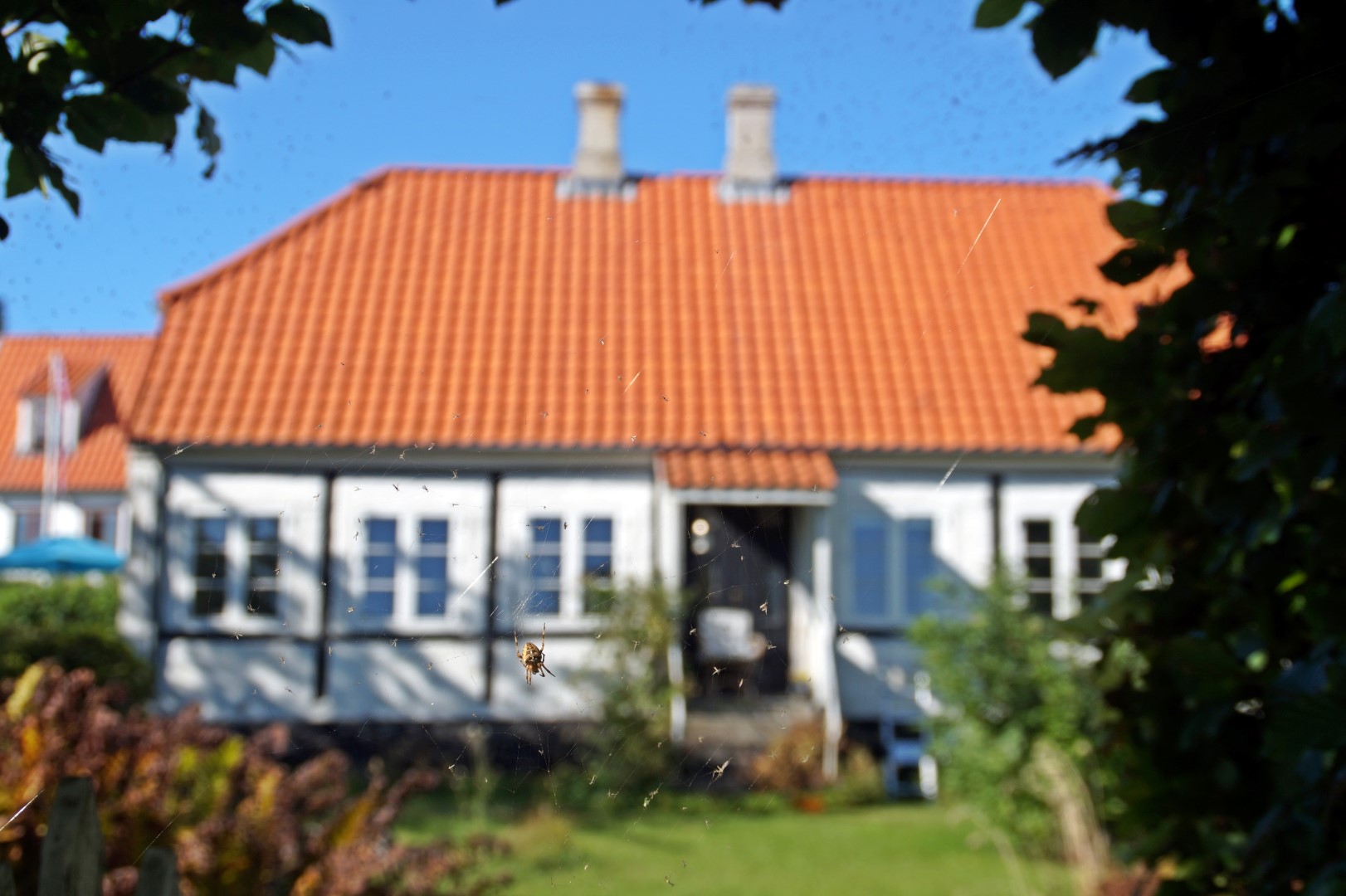
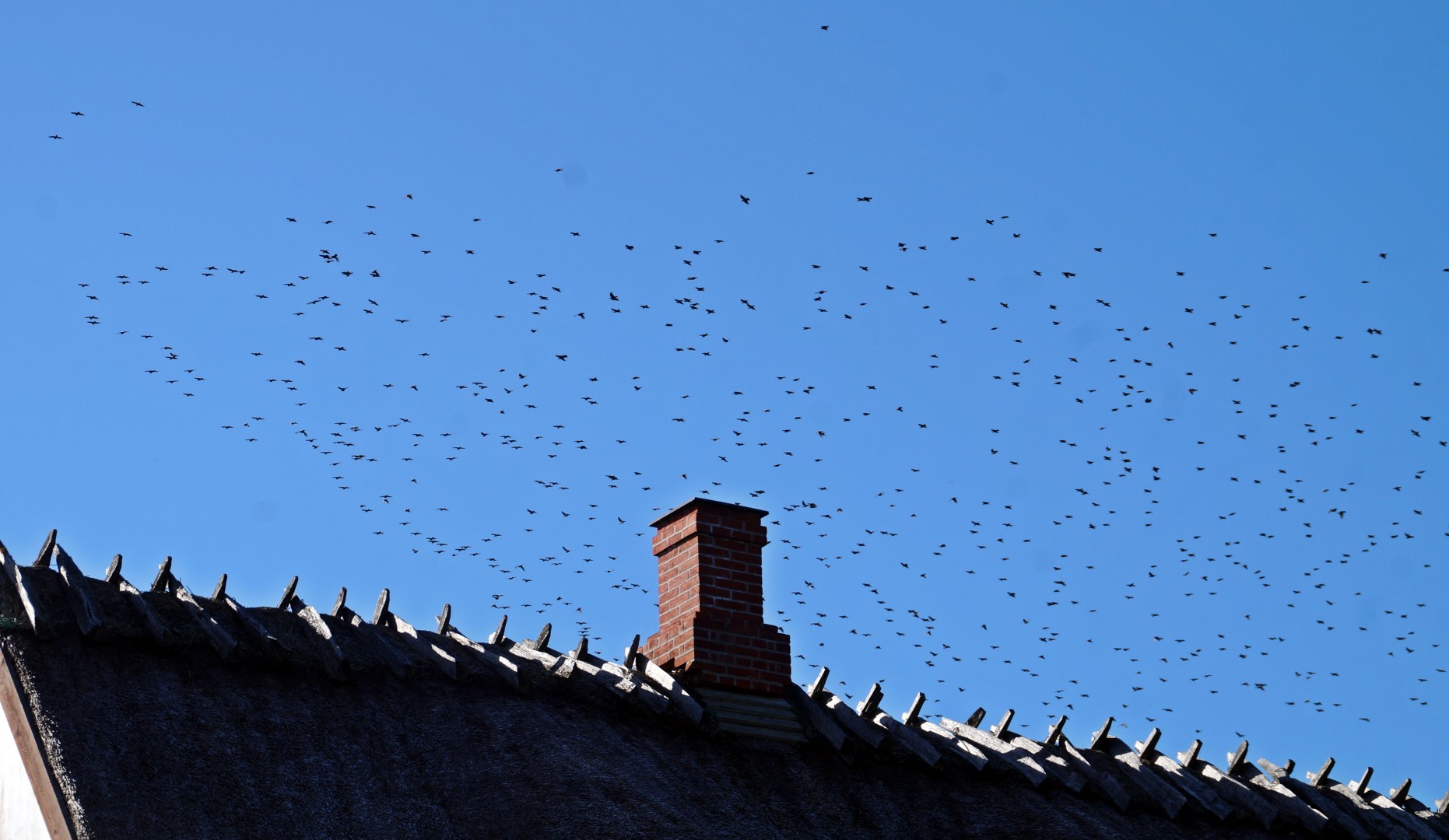
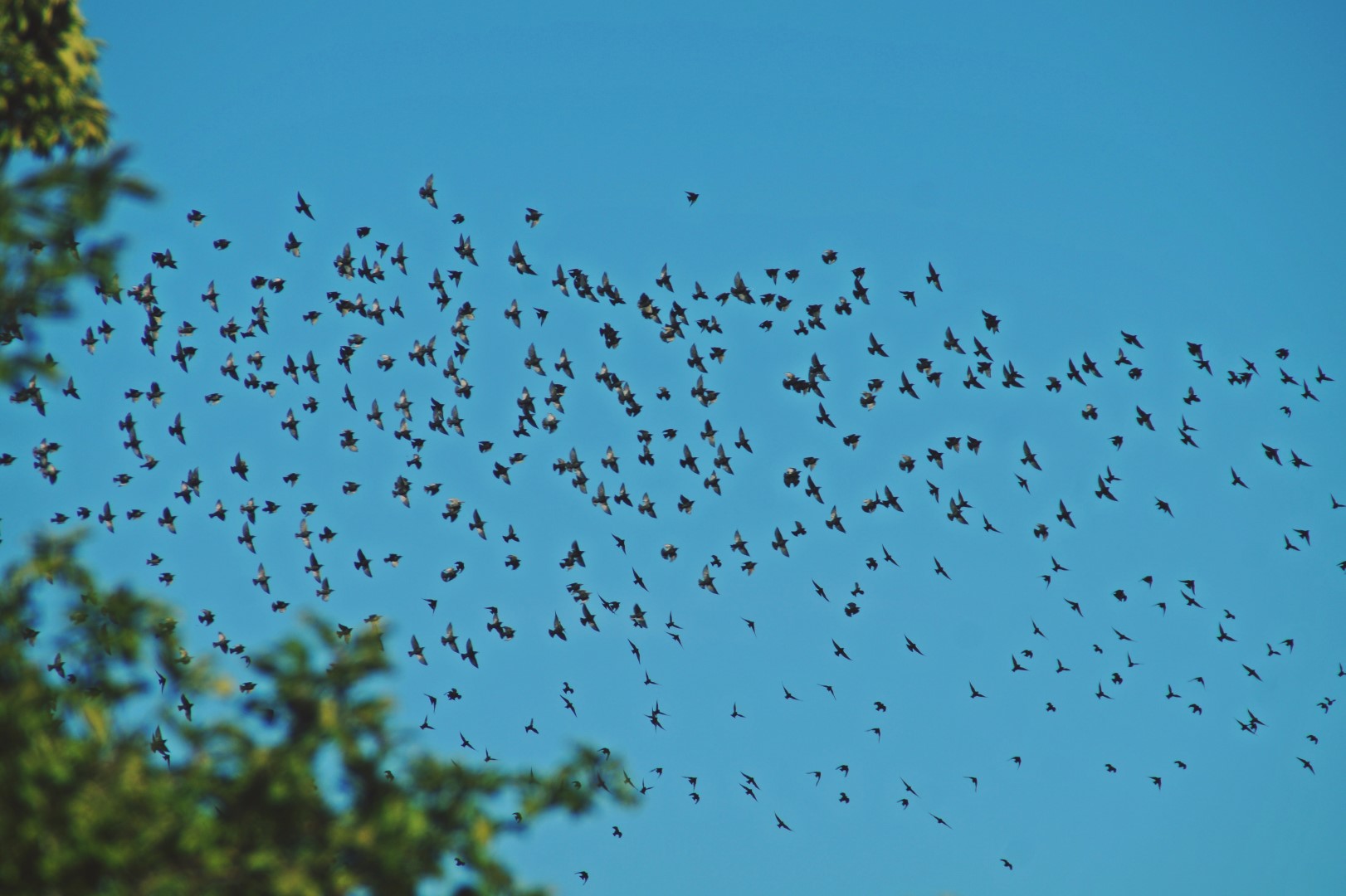
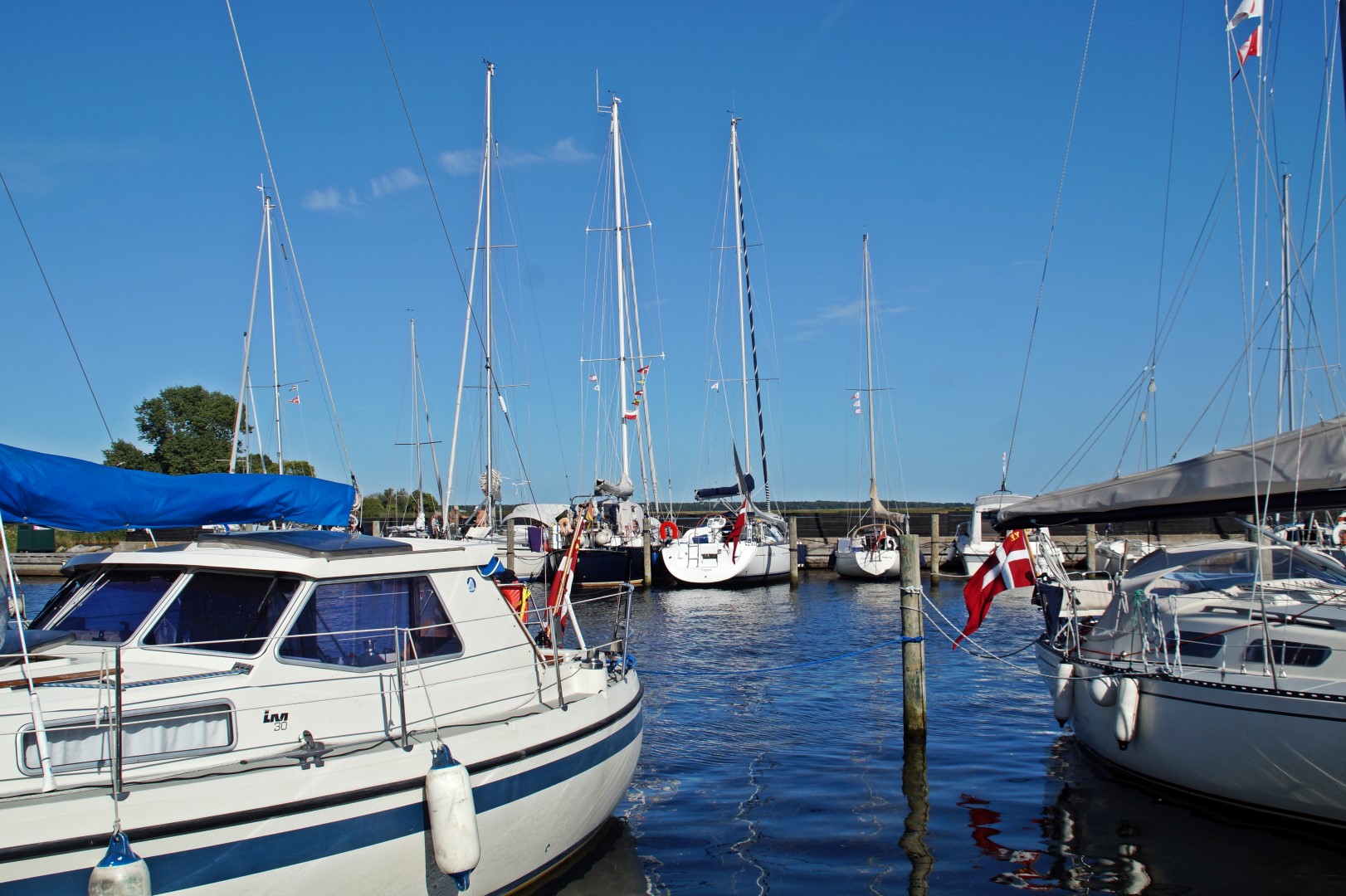
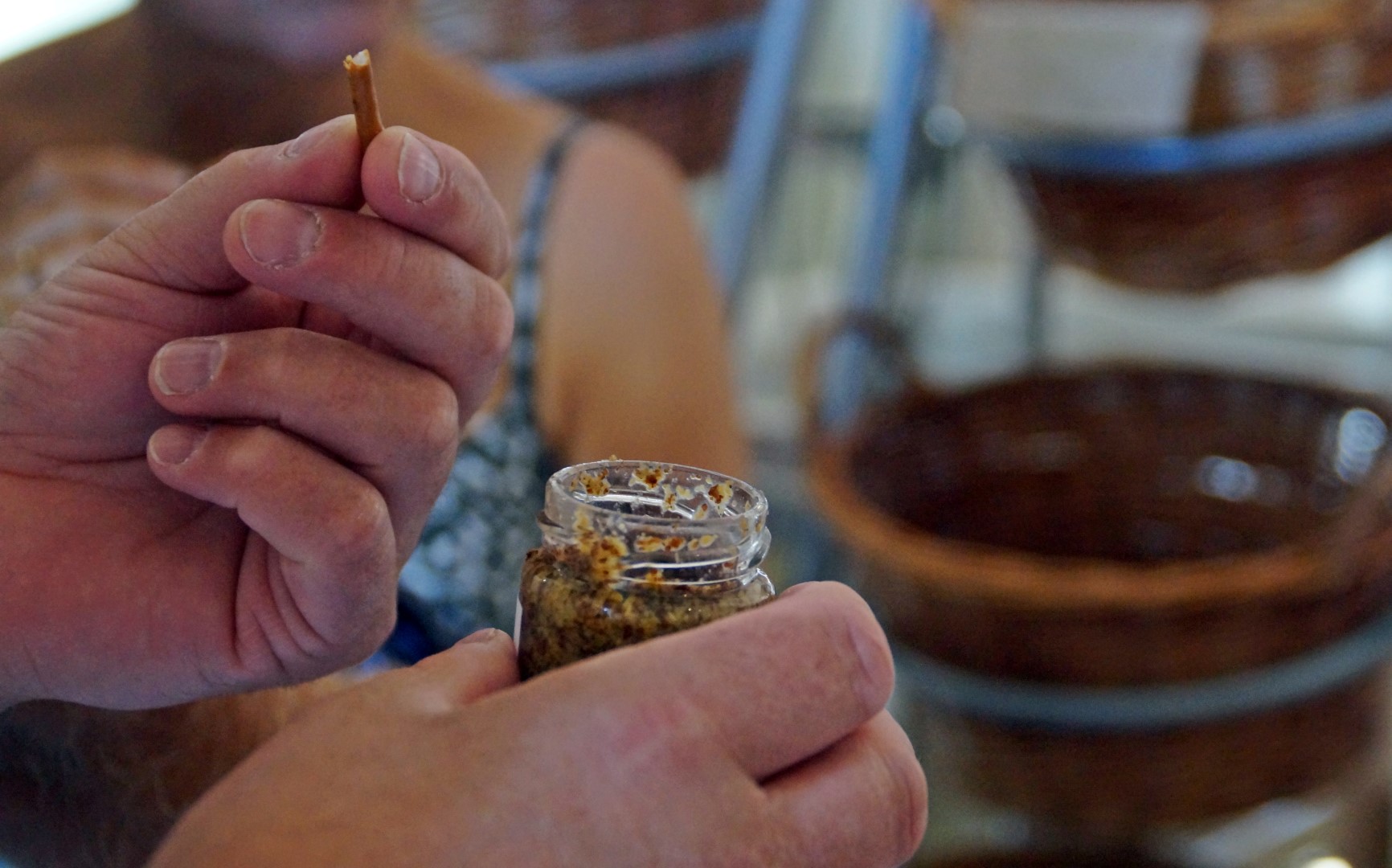
Saturday evening in Stege
In the evening, we drove to Stege, the largest town on Møn, to have dinner at a cozy restaurant in the center of the town.
Stege, which was originally an old fishing port founded in the early 12th century, lies at the mouth of Stege Nor, a lake which connects with the ocean. Despite its small size, Stege is just as charming and interesting as other more well-known medieval towns like Ribe, Viborg and Vordingborg, and is definitely worth a visit.
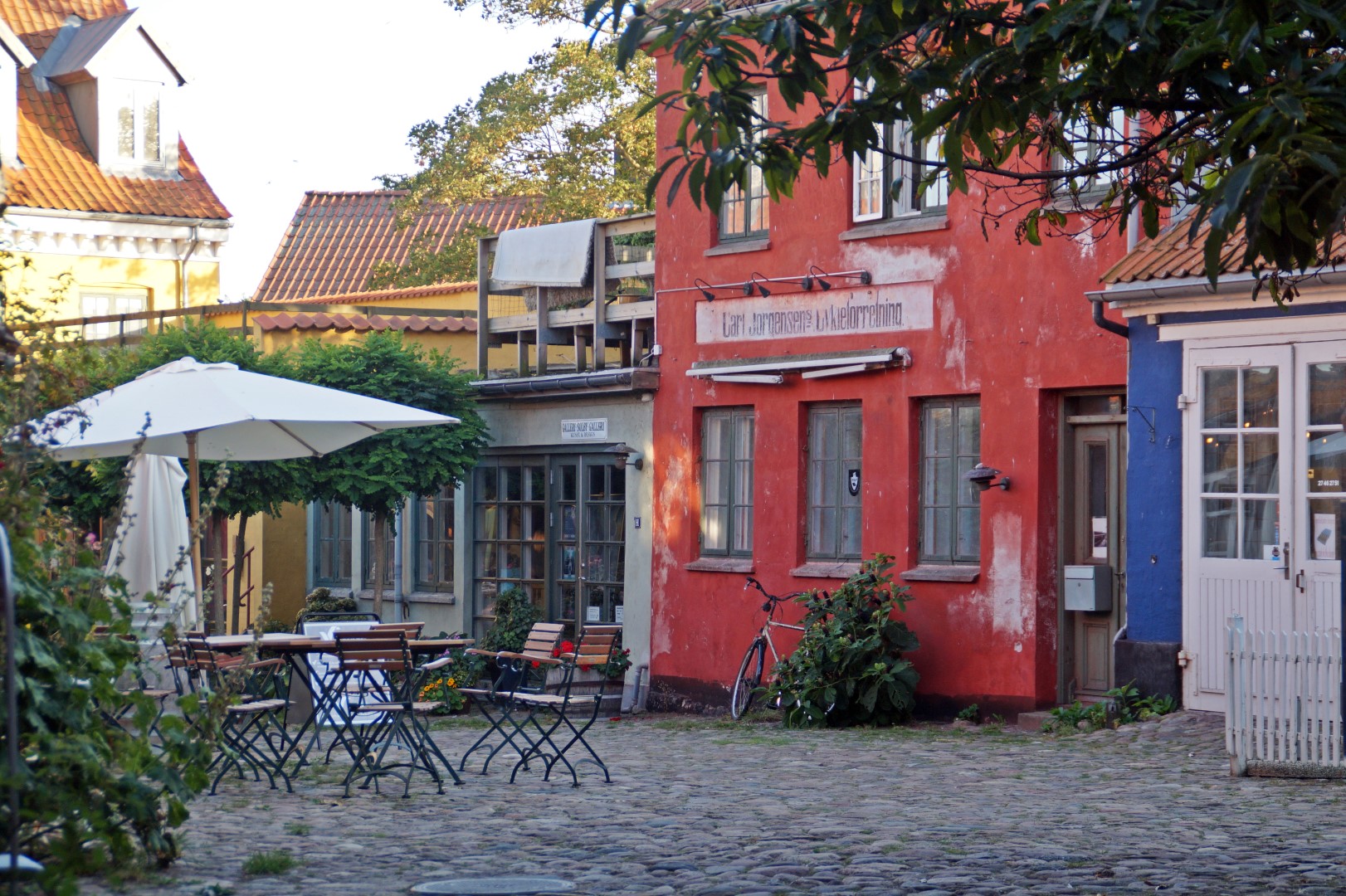
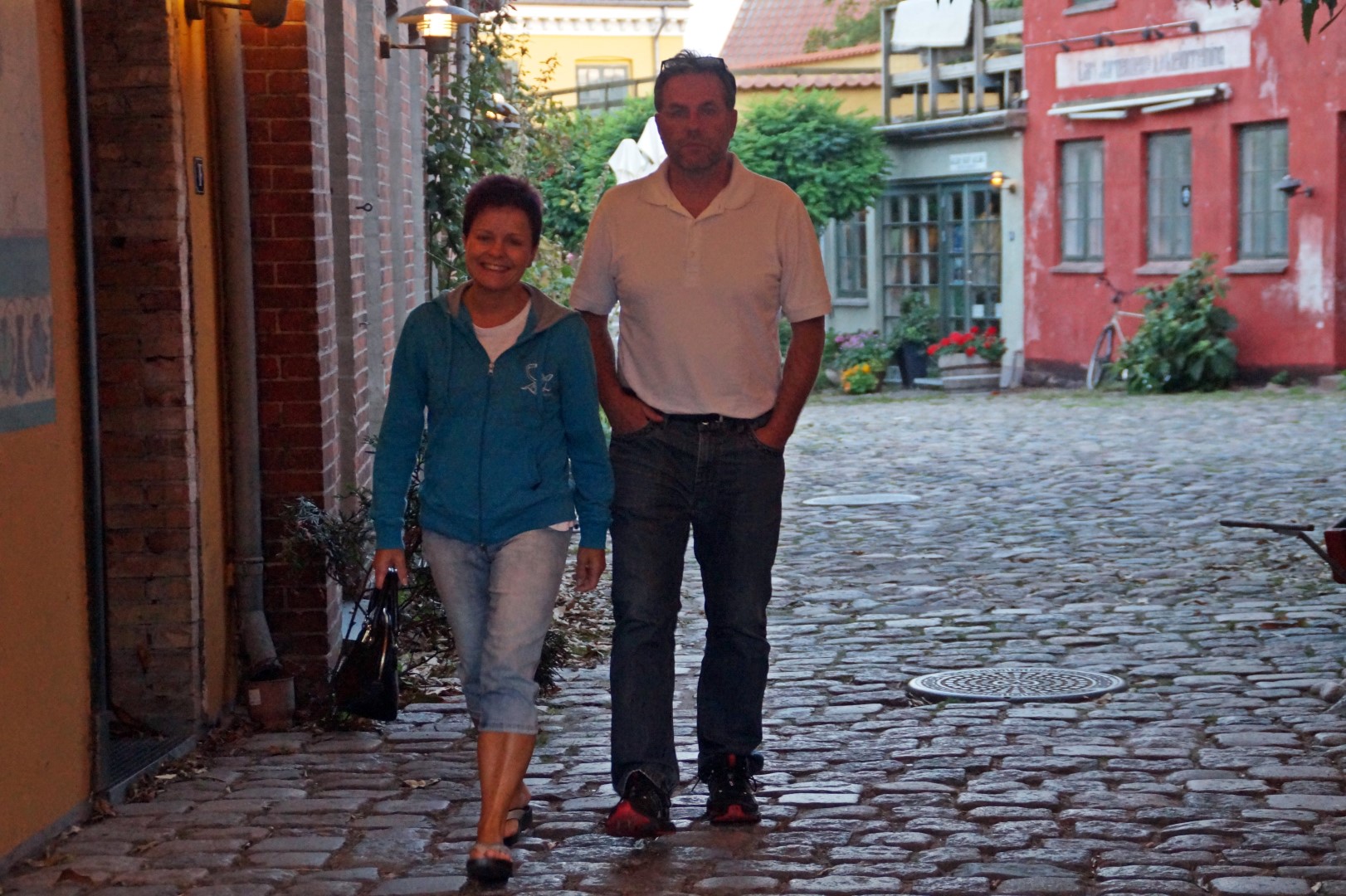
Archaeological sites of Møn: Kong Asgers Høj
After dinner, we decided to go for another drive, this time to one of Møn’s many archaeological sites, Kong Asgers Høj.
Kong Asgers Høj is a large passage grave, which is open for the public to explore. The passage grave was excavated by the amateour archaeologist Gustav C. Hage in 1839, but only a few skeletal remains, two flint blades and a 600 year-old hatchet was found. The passage grave was constructed about 3.200 BC, but with the find of the hatchet it’s evident that it was used for many years after its construction – but the purpose remains uncertain. Therefore, a lot of the original grave goods may have been removed.
When we got there, it was already almost dark, so we had to use torches to find the entrance. Inside the passage grave it’s necessary to use torches in daylight as well, as passage graves are completely lightproof. It was an experience to walk inside the passage grave and explore it with the company of my parents and a million ginormous spiders. I guess I need to get used to that, if I want to become an archaeologist!
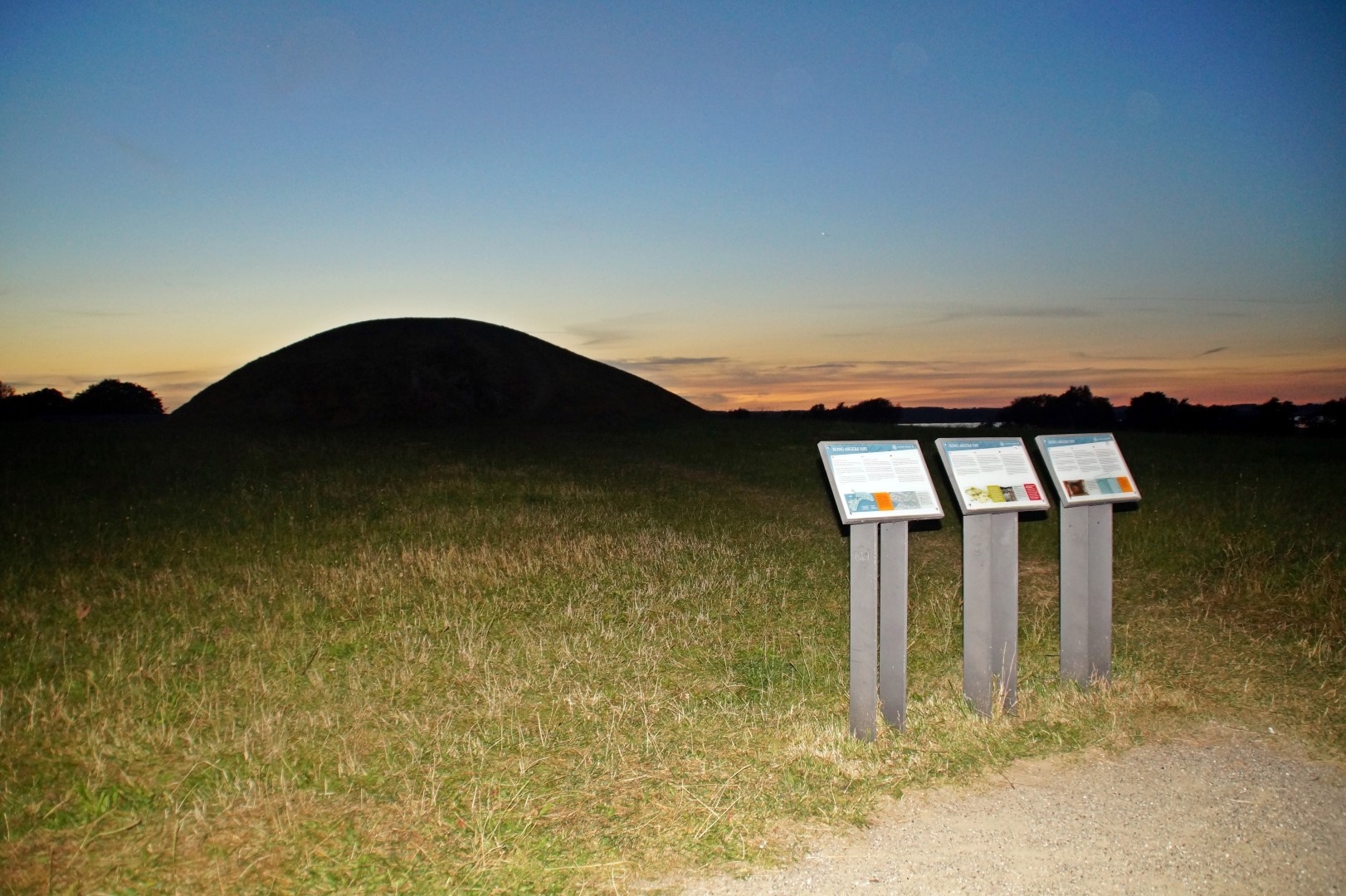
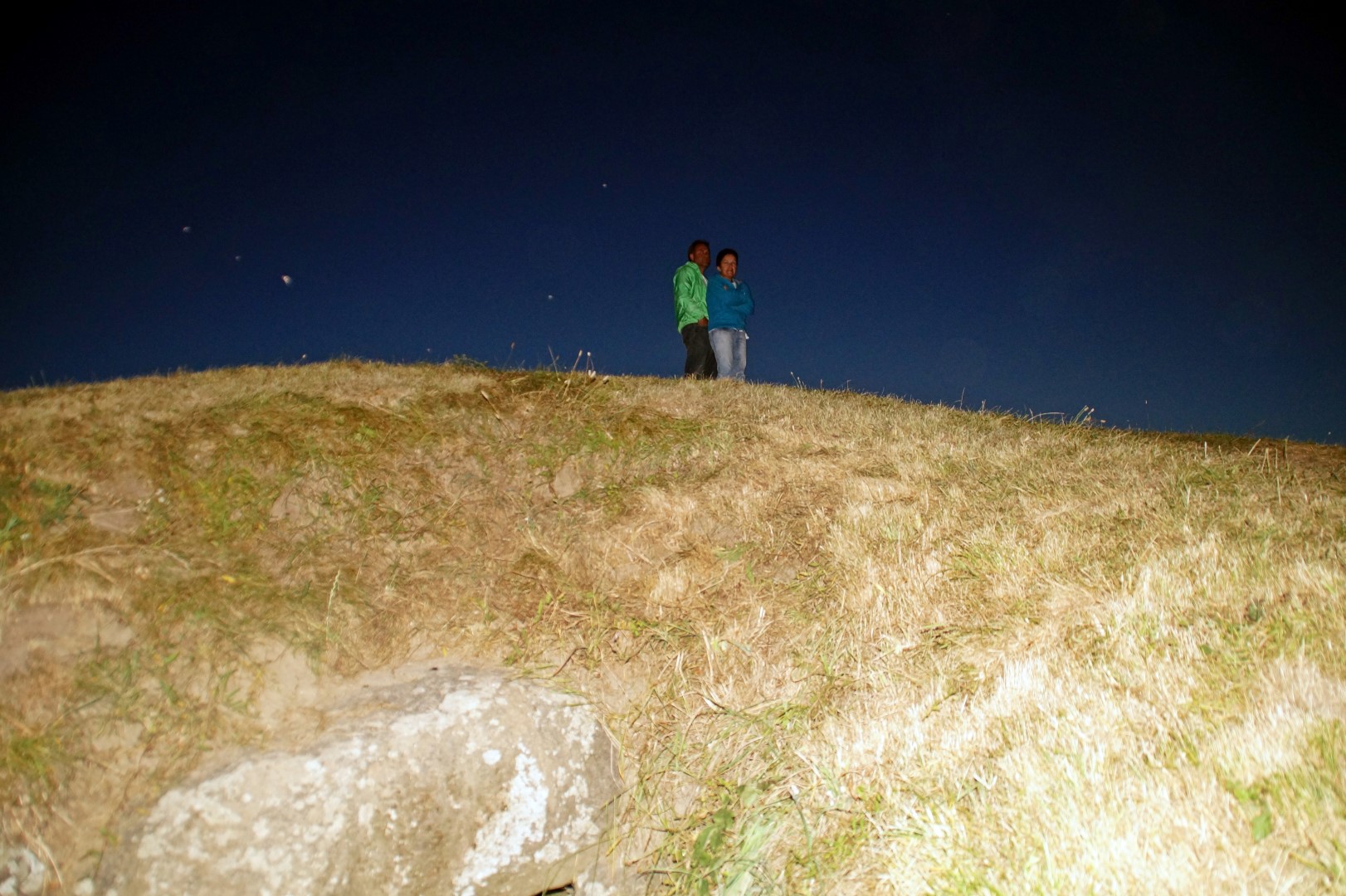
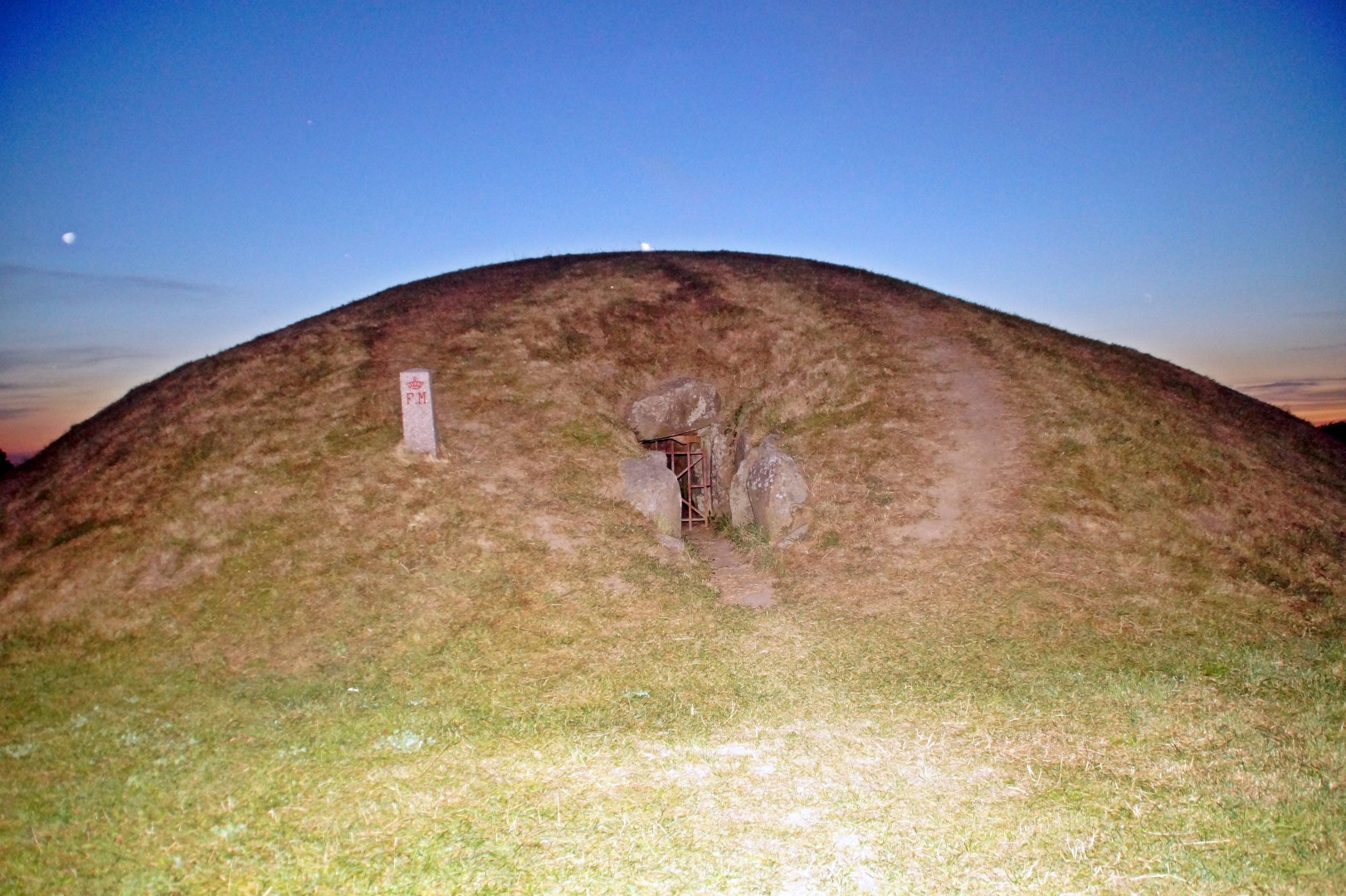
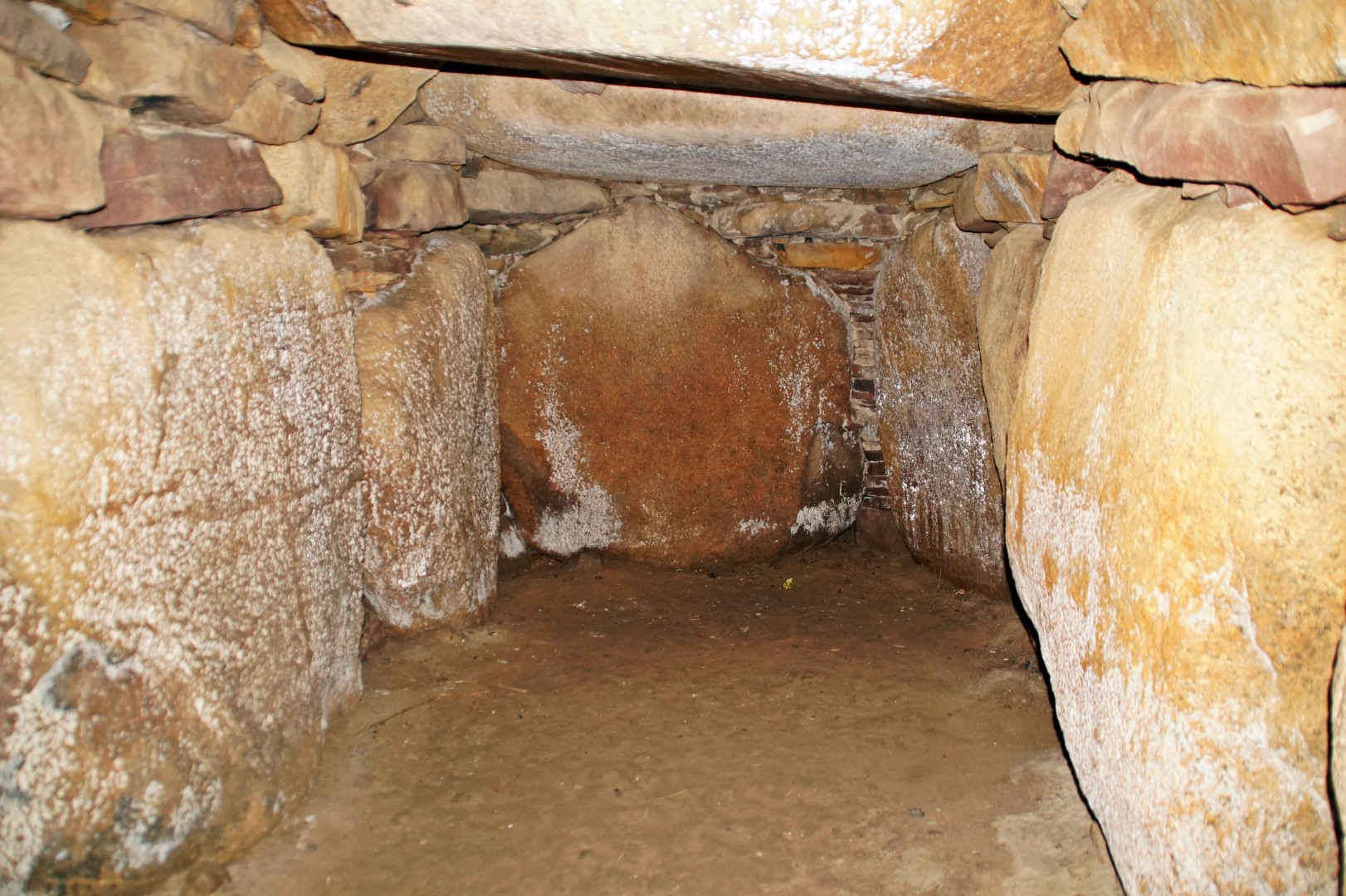
Sunset at Queen Alexandrine Bridge
Afterwards, we caught the last glimpses of the colourful sunset at the Queen Alexandrine Bridge, which connects Møn with the larger island of Zealand. An eventful day was now over and it was time to head back to the farmhouse for a good night’s sleep.
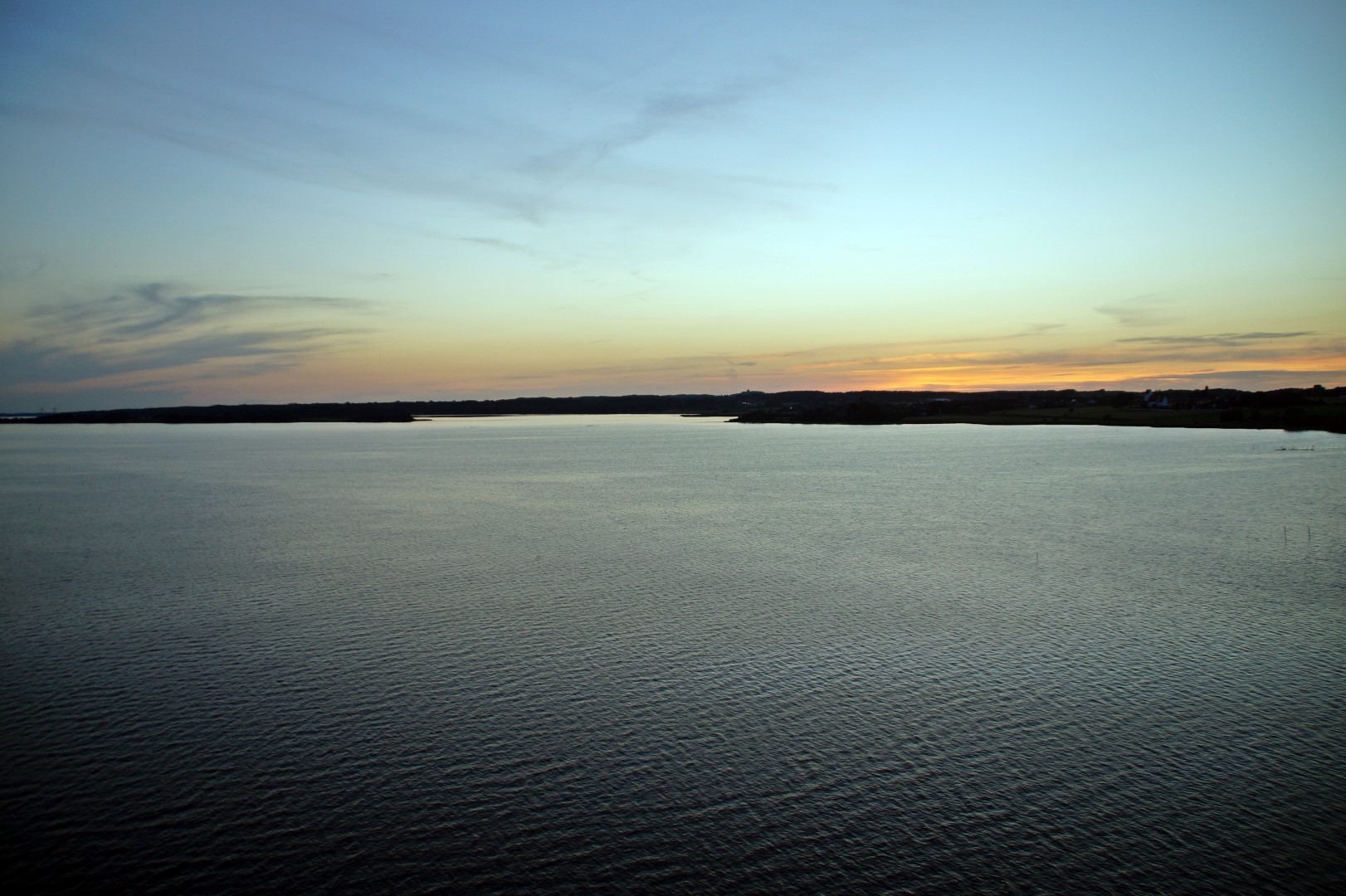
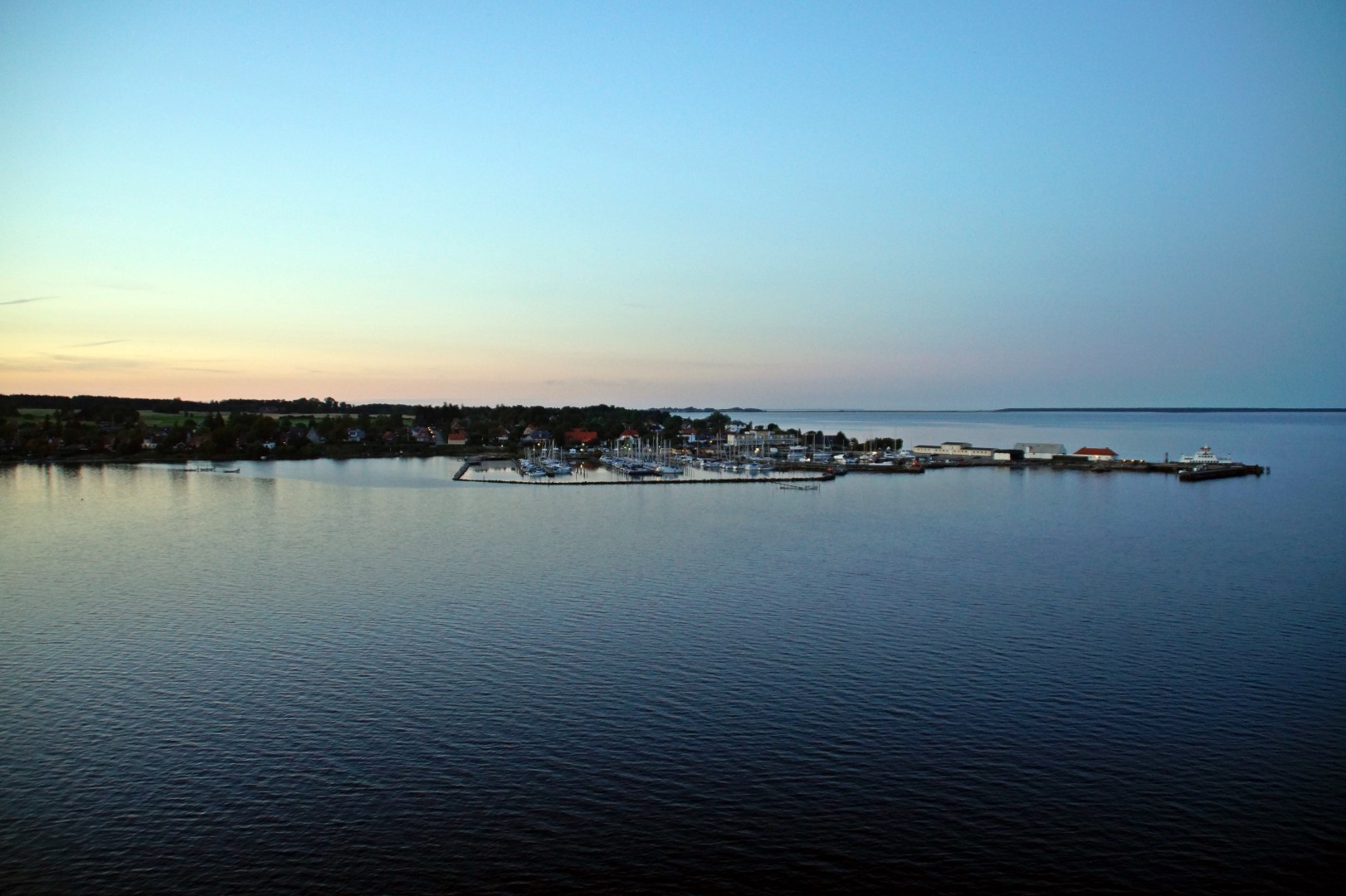
Archaeological sites of Møn: Klekkende Høj
We woke up early next morning, as we wanted to do some more exploring before I had to go back to Copenhagen and my parents had to go back to Jutland. We decided to visit two more archaeological sites; Klekkende Høj and Grønsalen.
Klekkende Høj is a megalithic tomb from the Neolithic Age, approximately 4.500 years old, which was excavated in 1791 by Antoine de Bosc de la Calmette. It’s the only twin passage grave on Møn, meaning that there are two entrance passages running parallel to each other. One of these entrances was open to the public, but since we had all forgotten our torches, I was only able to climb in a bit of the way before all natural light was blocked out.
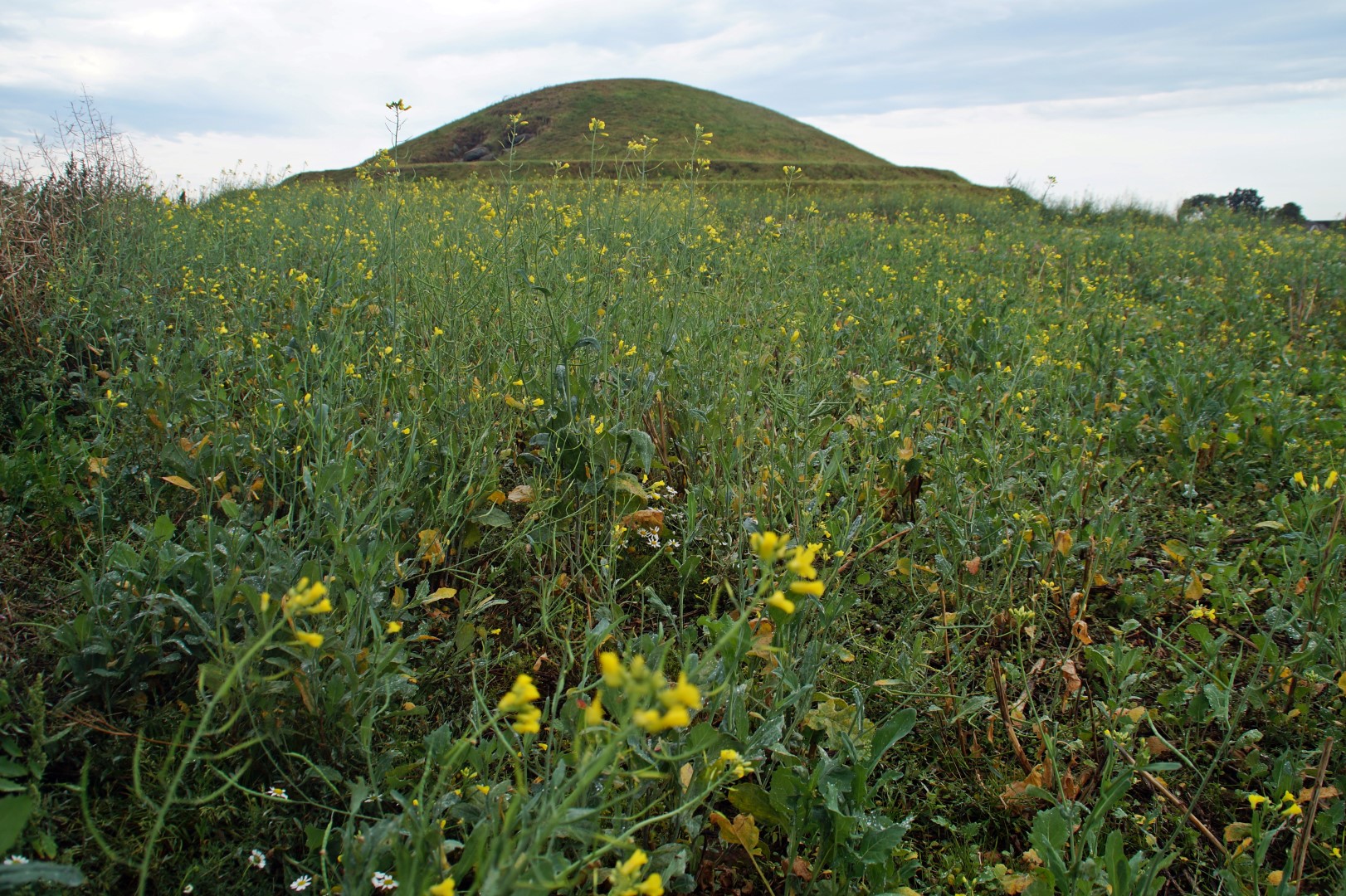
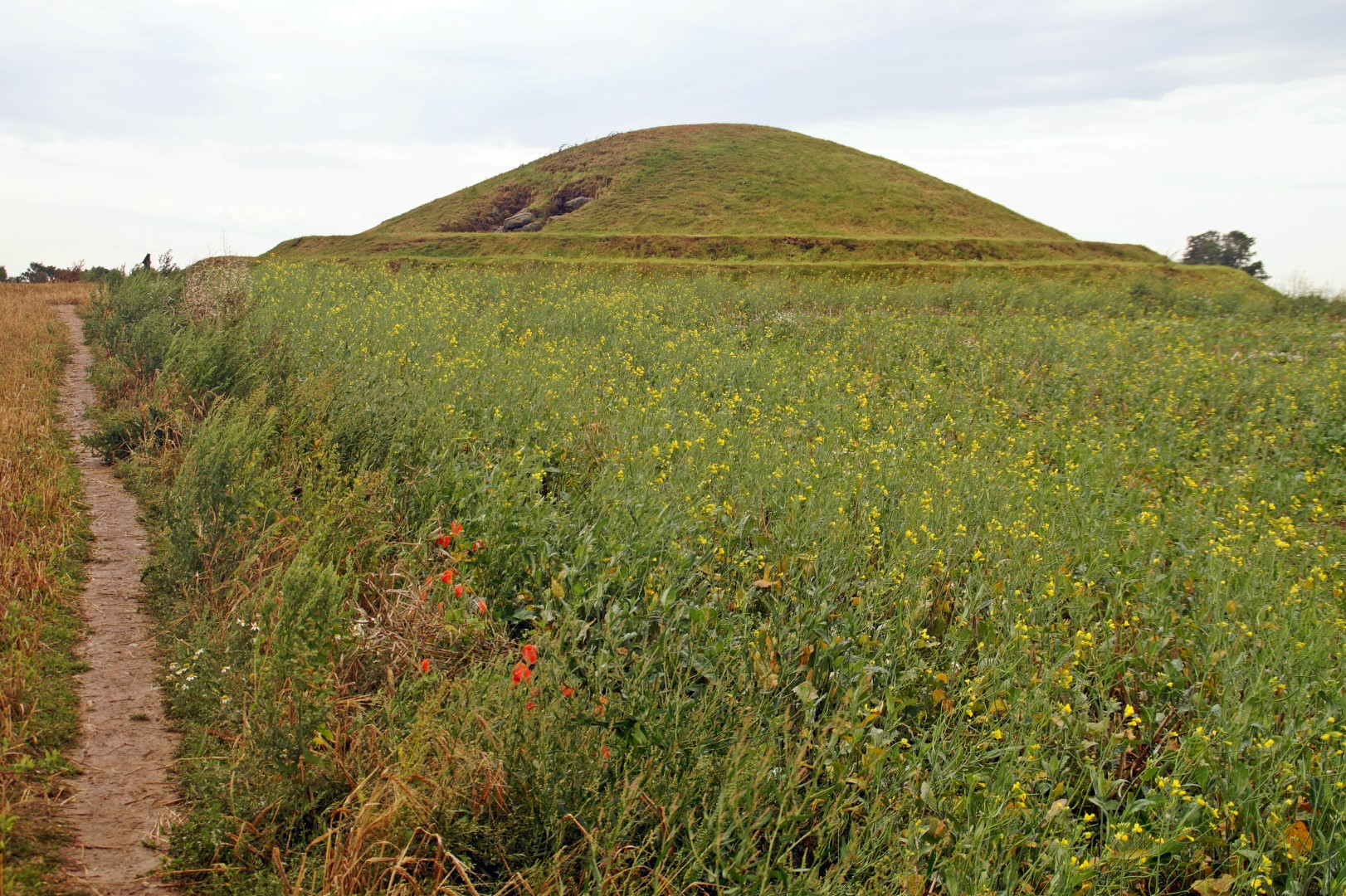
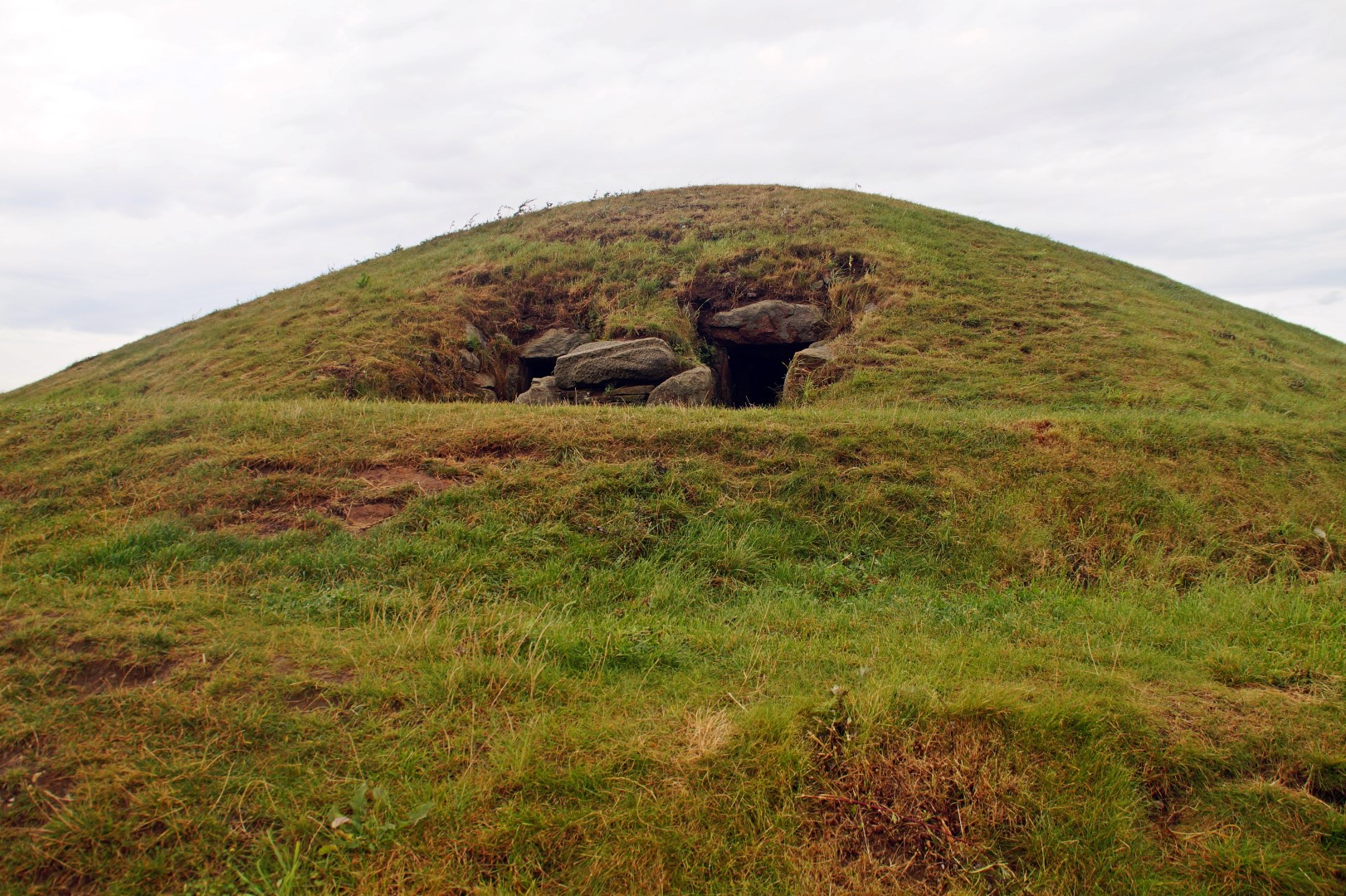
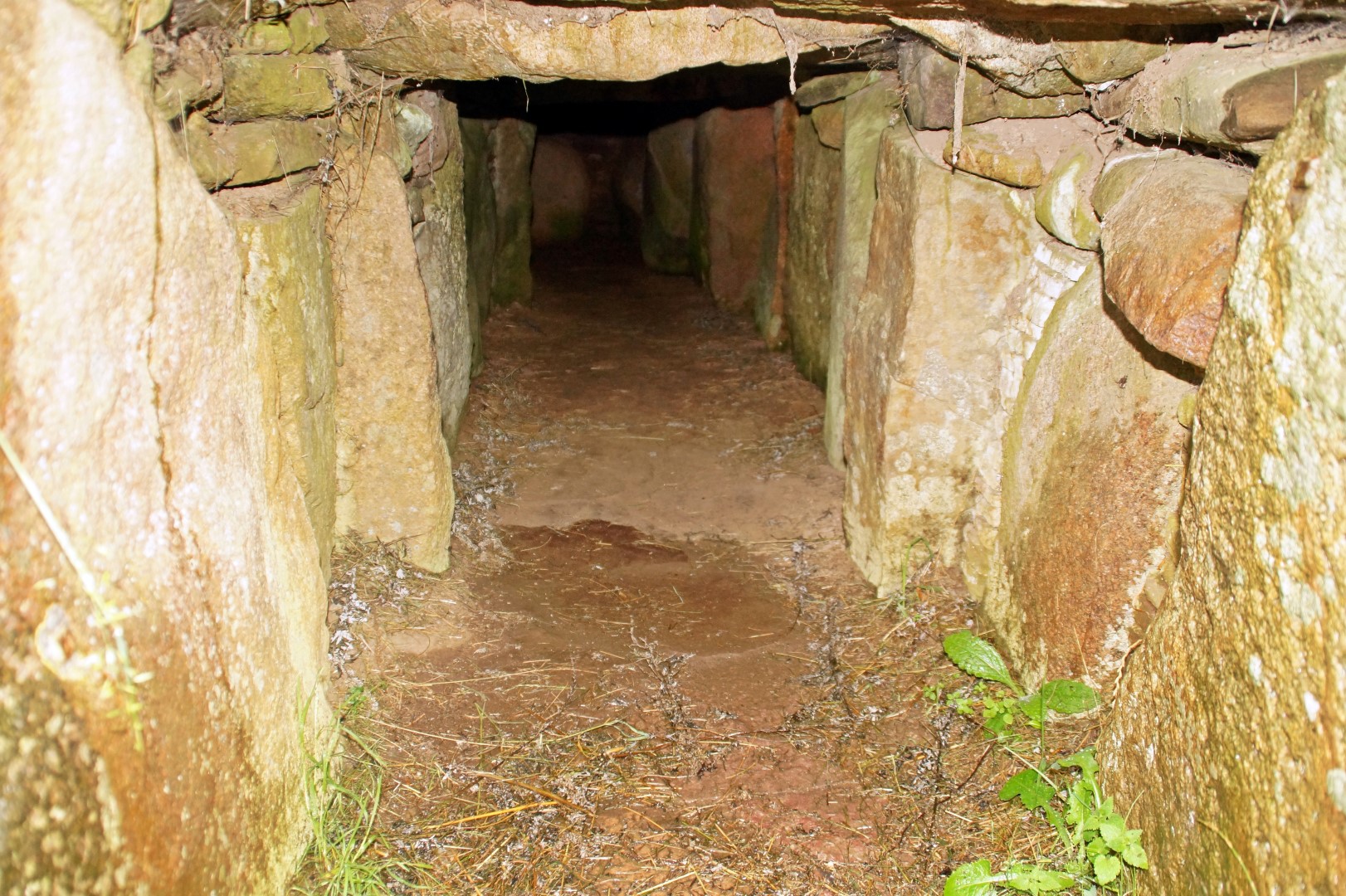
Archaeological sites of Møn: Grønsalen
The last stop on our trip around Møn was Grønsalen, which is Denmark’s largest long barrow at 100 metres long and 10 metres wide, dated to the Neolithic Age, approximately 3.500 BC. The barrow is encircled by 134 large stones and rises over a metre above the surrounding area. The grave contains three burial chambers, two of which are open and can be seen if you take a walk on top of the barrow, which my dad and I decided to do.
When I was younger, I often biked around East Jutland, searching for archaeological sites. I’ve seen and explored several passage graves (and other types of graves) before, but I’ve never seen a long barrow before, so that was a really interesting experience. Since I’m now studying prehistoric archaeology, I’ll be exploring a lot more of Denmark’s ancient sites, and some of the more interesting ones I’ll be sure to share here on the blog!
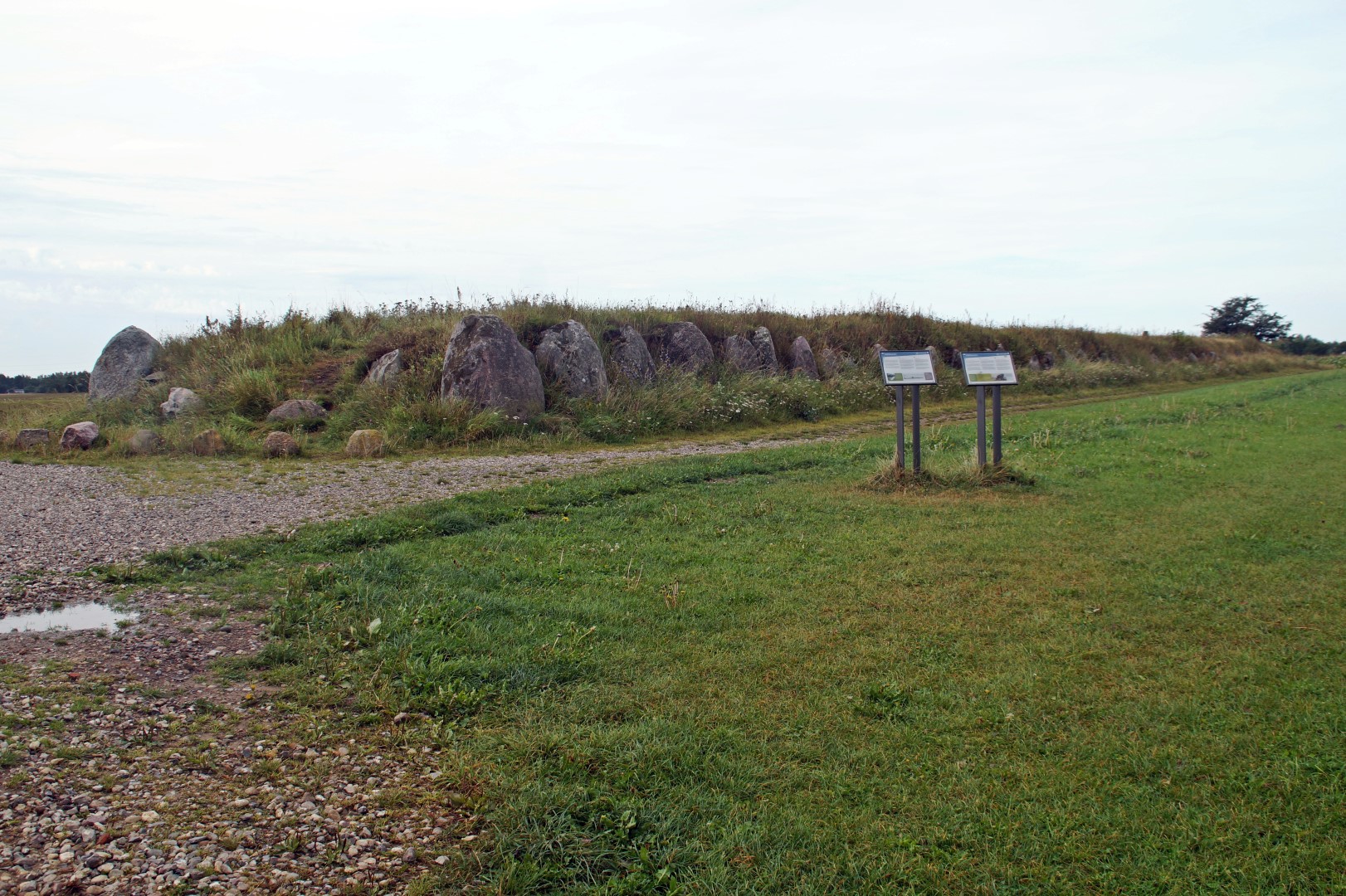
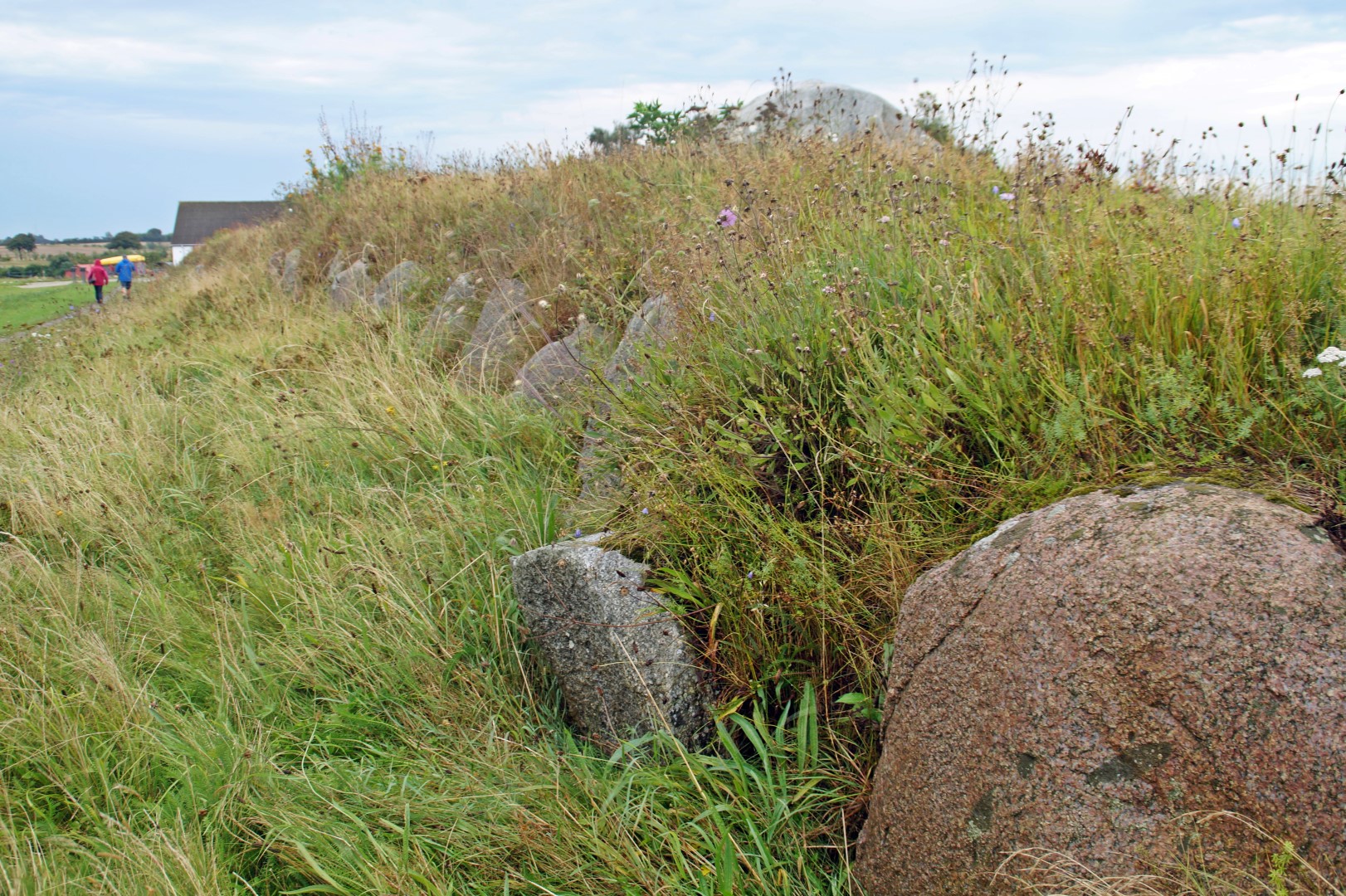
Visiting Møn with my parents was a nice and much-needed break from the busy university life. I enjoyed exploring the entire island, and Møns Klint, just as I had expected, certainly didn’t disappoint.
Møn was the first of many Danish islands that I plan on exploring over the next few years while I’m based in the country – so stay tuned for more posts about Denmark’s island gems!
Leave a Comment
Pingback: A week on Rügen, Germany’s largest island – Northtrotter on 21/11/2016
Pingback: Venture beyond Copenhagen: 20 beautiful places to explore in rural Denmark – Northtrotter on 21/11/2016
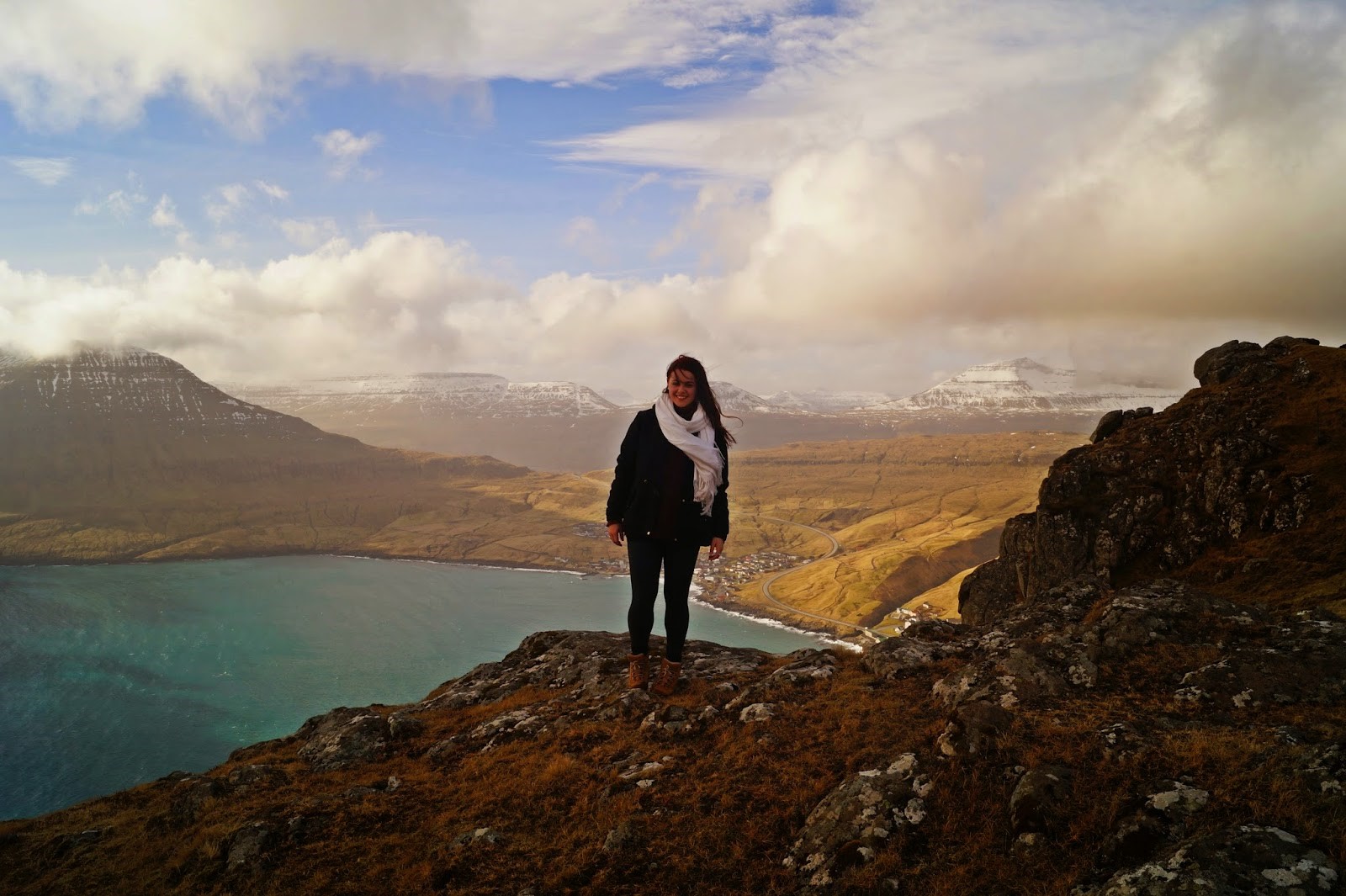

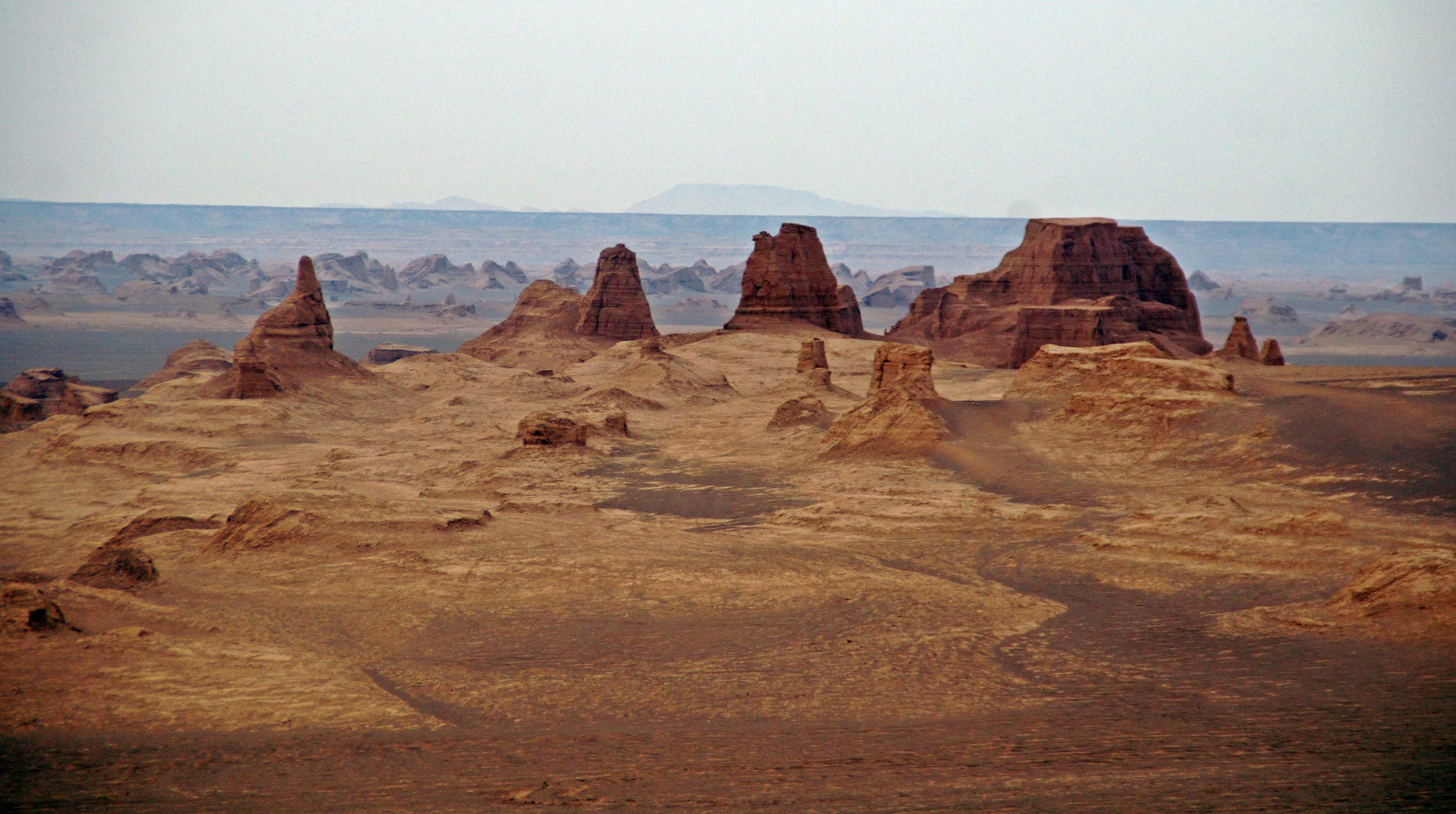

5 COMMENTS
Ann
7 years agoOh, I like Danish villages, they are so cute. These nice houses like from some fairy tale. If you dad is so found of mustard, he should come to my country, we have here a very spicy mustard that can blow off your brain! I am not kidding.
Your parents look good. It’s nice to see them!
I love your pictures about cliffs, they are for me the best place to relax next to water! I am a real wish!
You will have a very interesting profession, dear Mel, it sounds so fascinating to me to be able to explore things that existed so many centuries ago. Perhaps you will find the real meaning of our life!
Thank you for sharing your trip, I love this place!
Take care and all the best for your study. Get only A grades!
Hugs!
Melissa Cherry
7 years agoIf my dad travels to Ukraine, I will be sure to go with him! I’m sure he would love your mustard 😉 I wish I could show you around some of our tiny villages and beautiful cliffs, I’m sure you would enjoy it!
Thank you Ann, I’m very excited to start finding stuff! :p
You take care too! Big hugs to you xx
Ann
7 years agoI look forward to meet you and your dad one day in Ukraine!
Thank you, Mel! I already know that your country is very charming. And I know I will visit it one day!